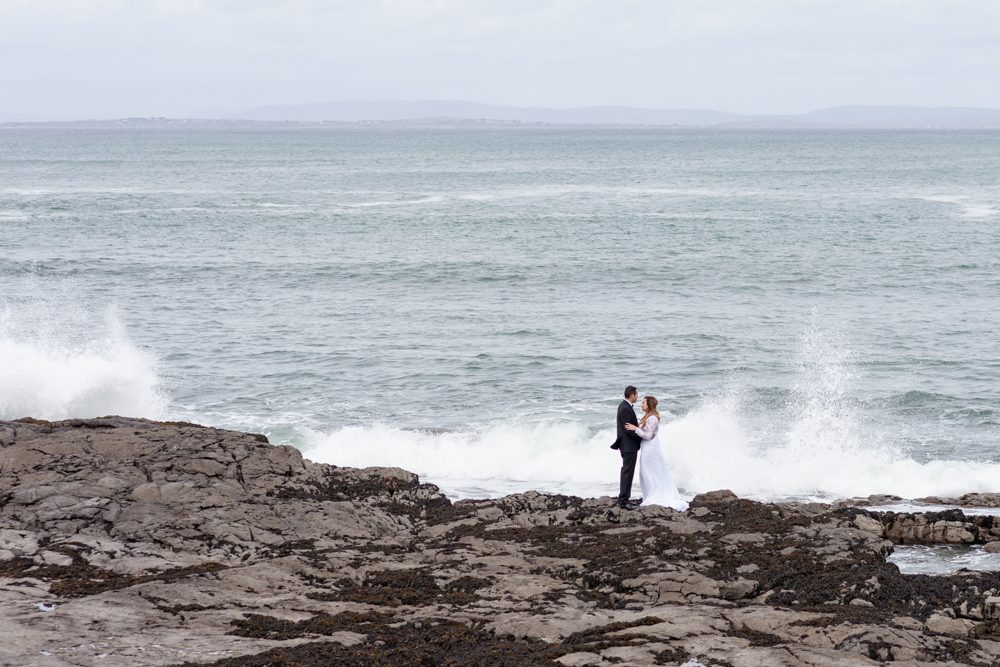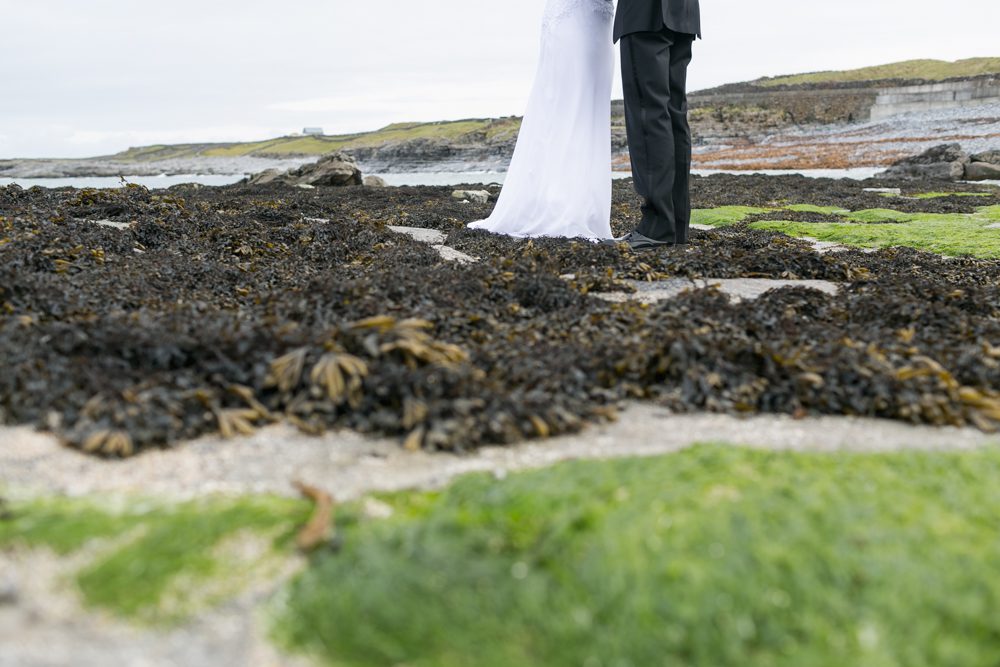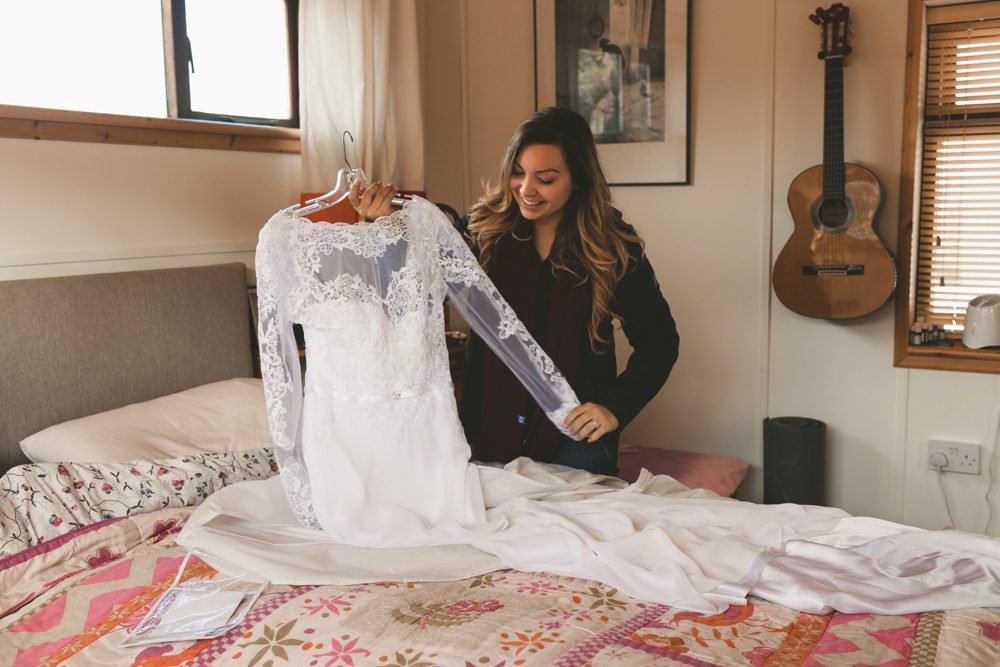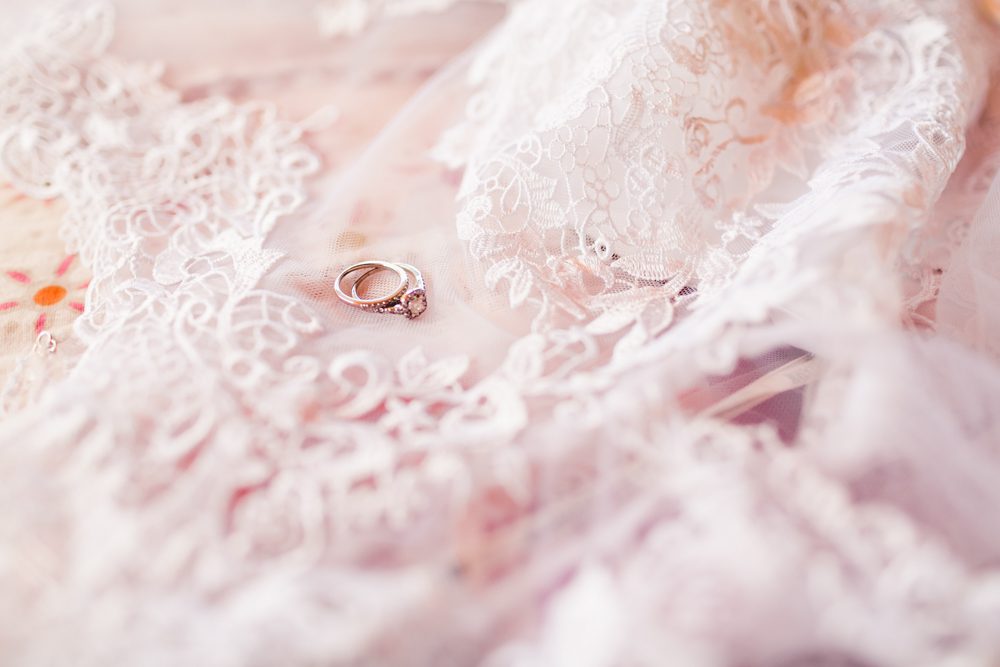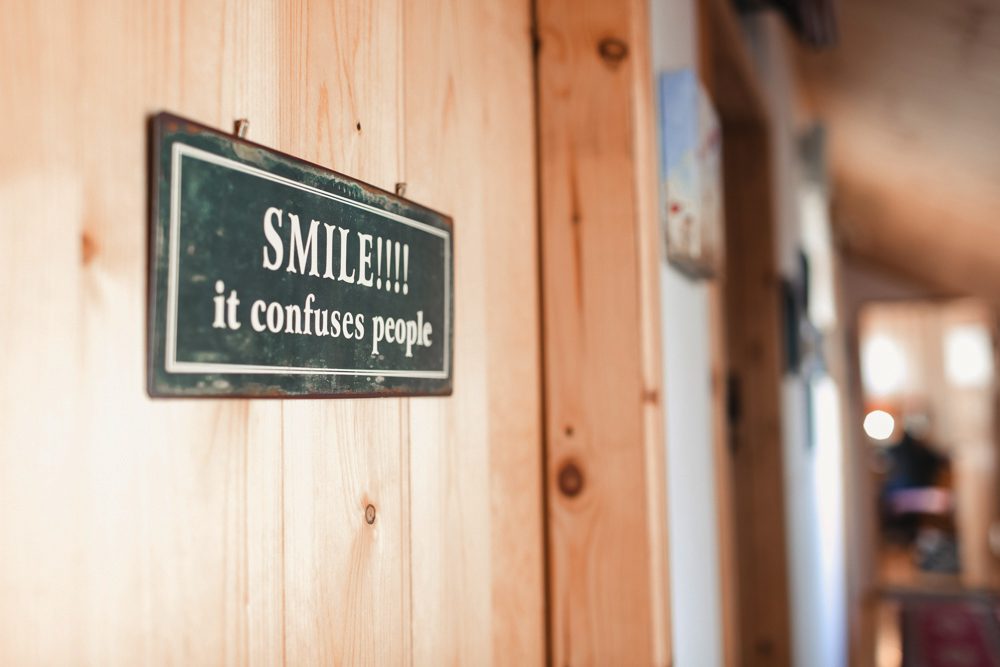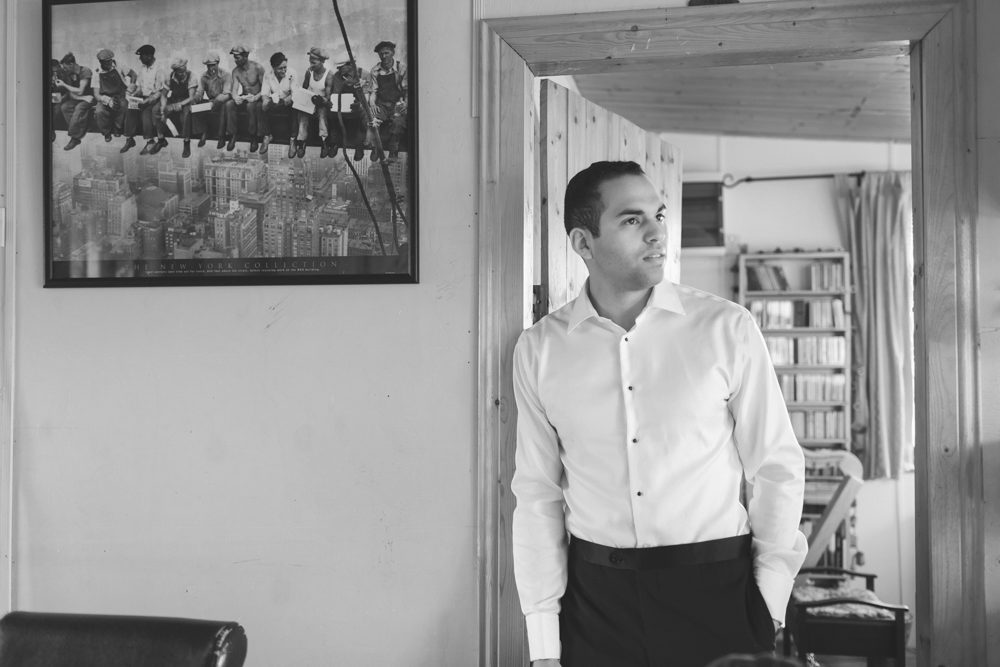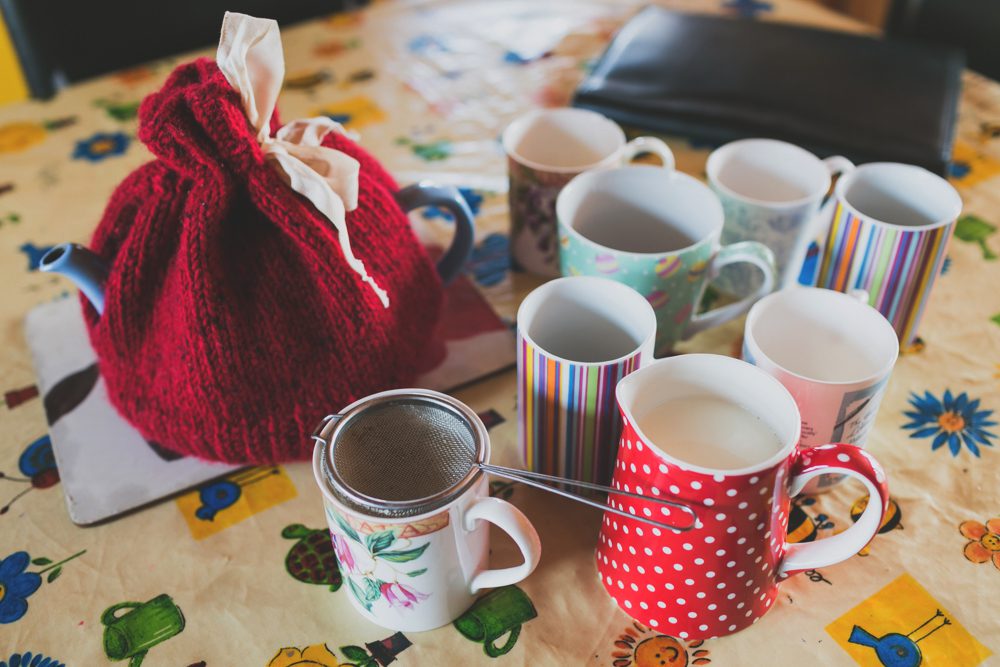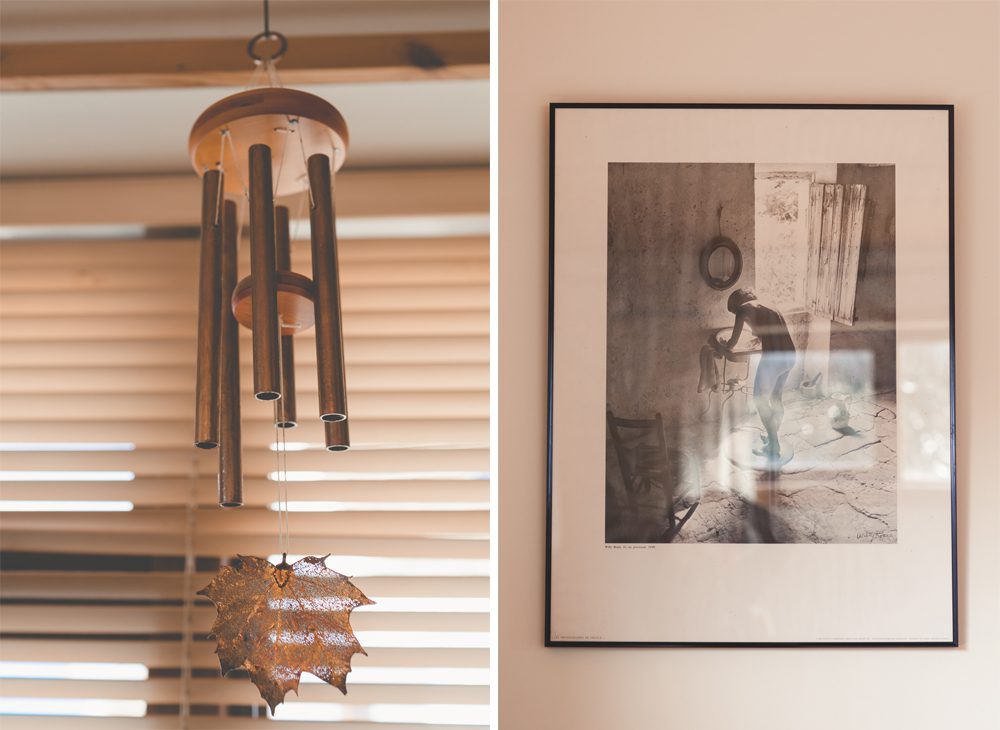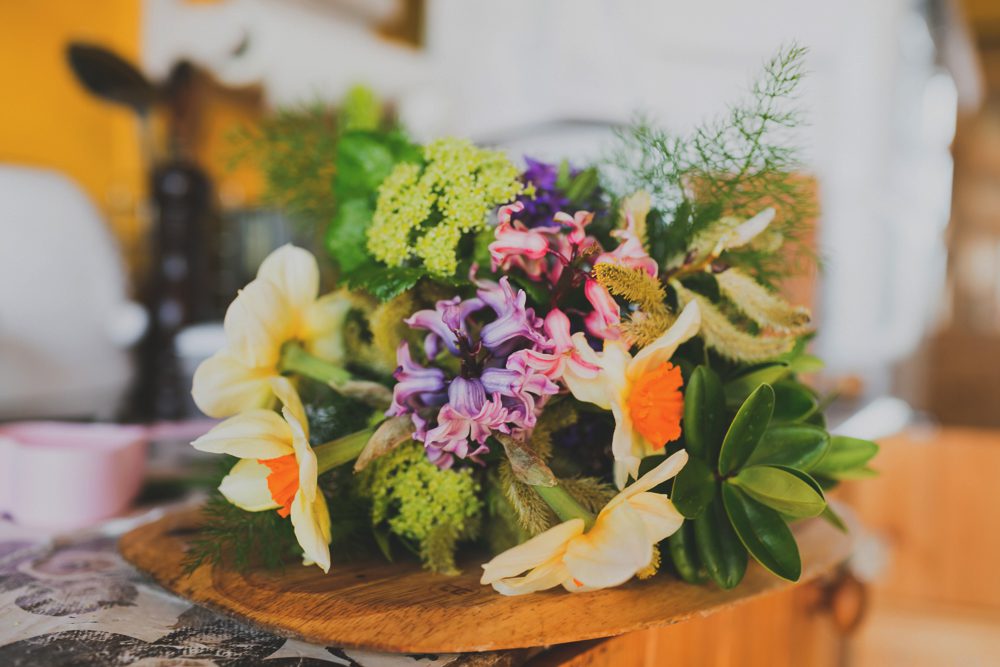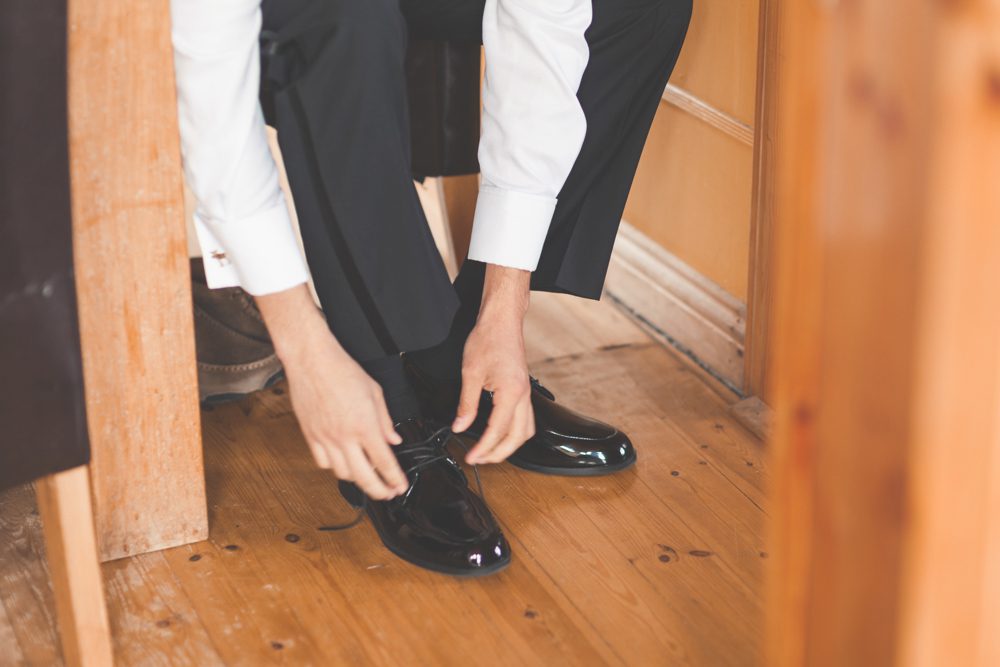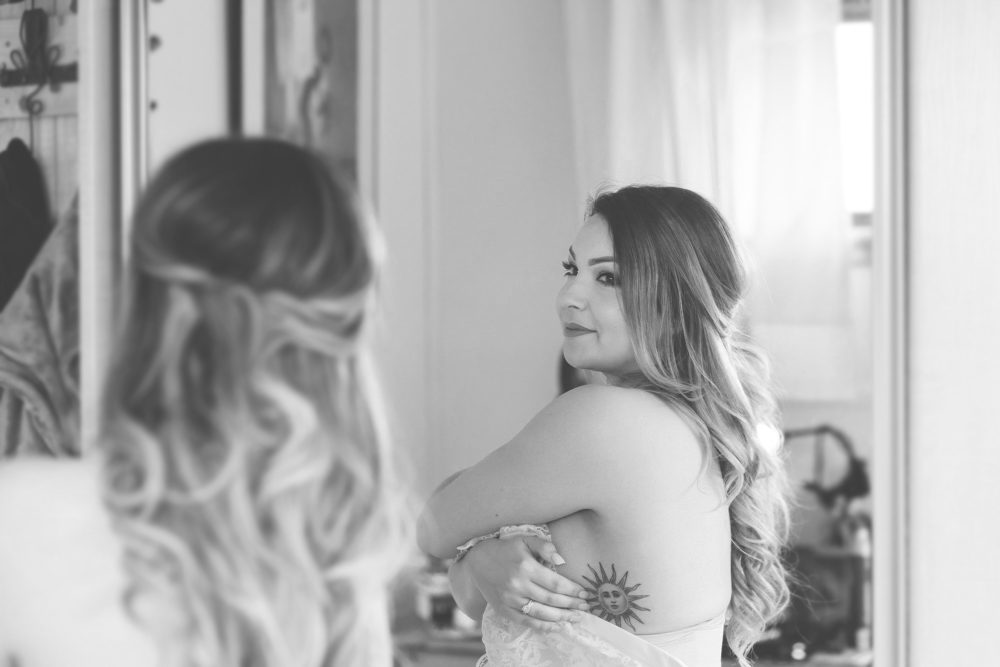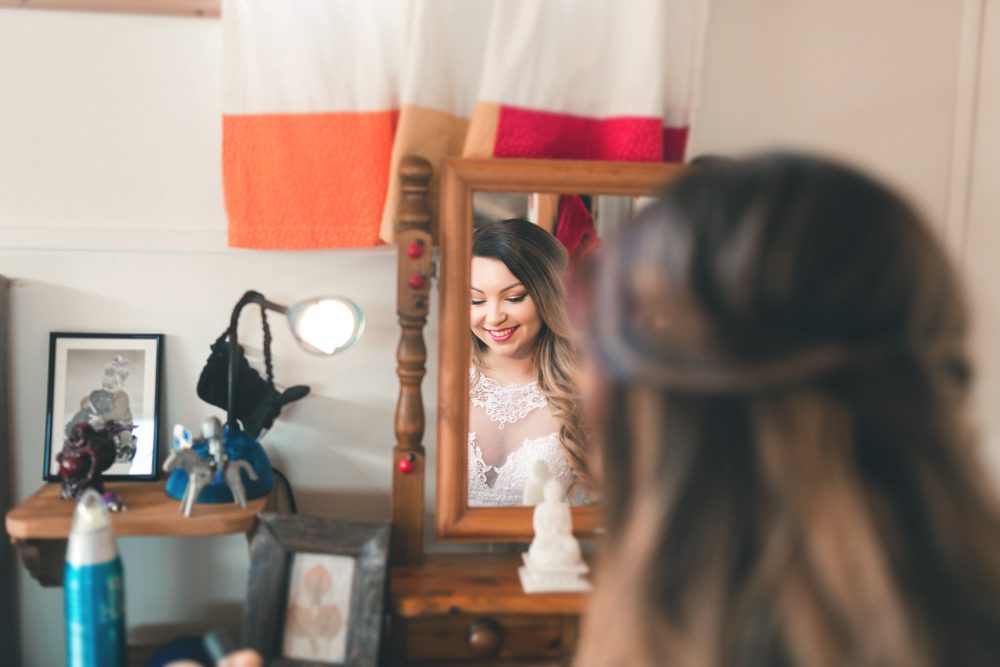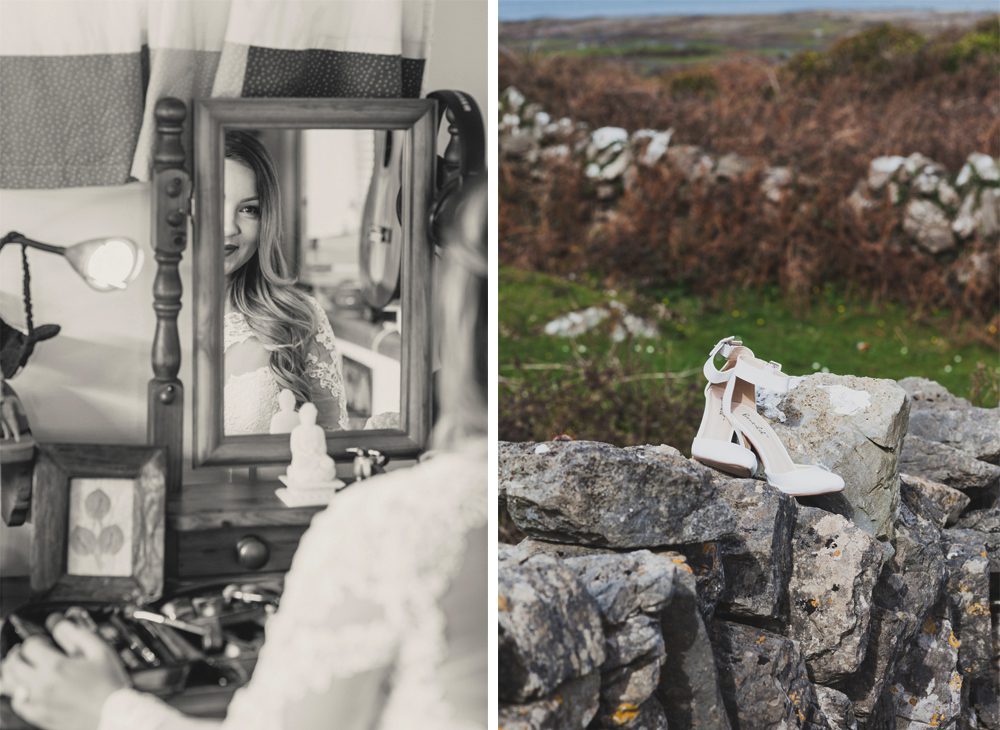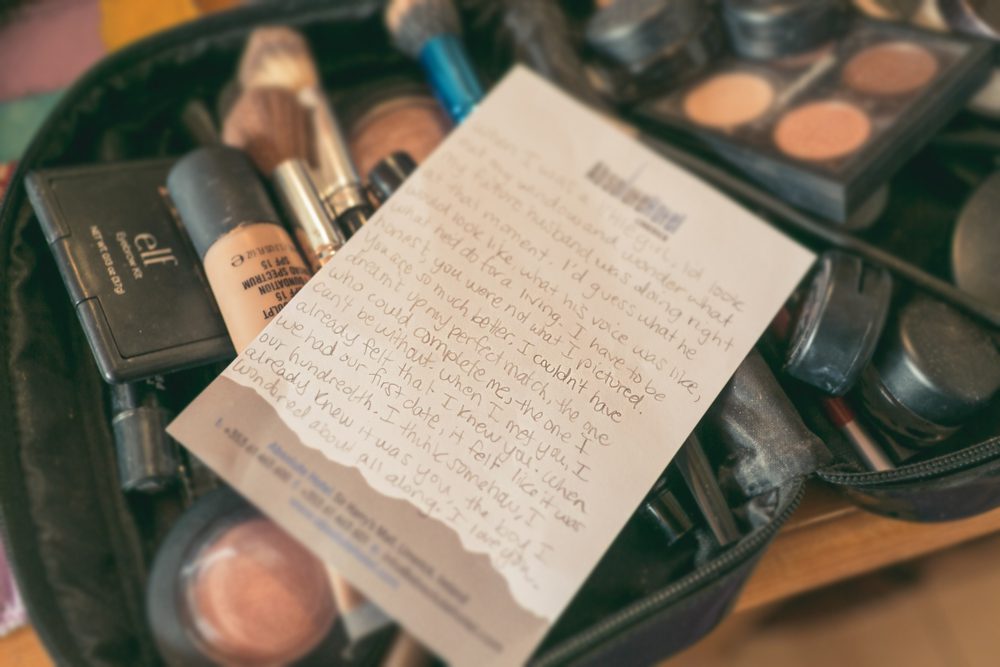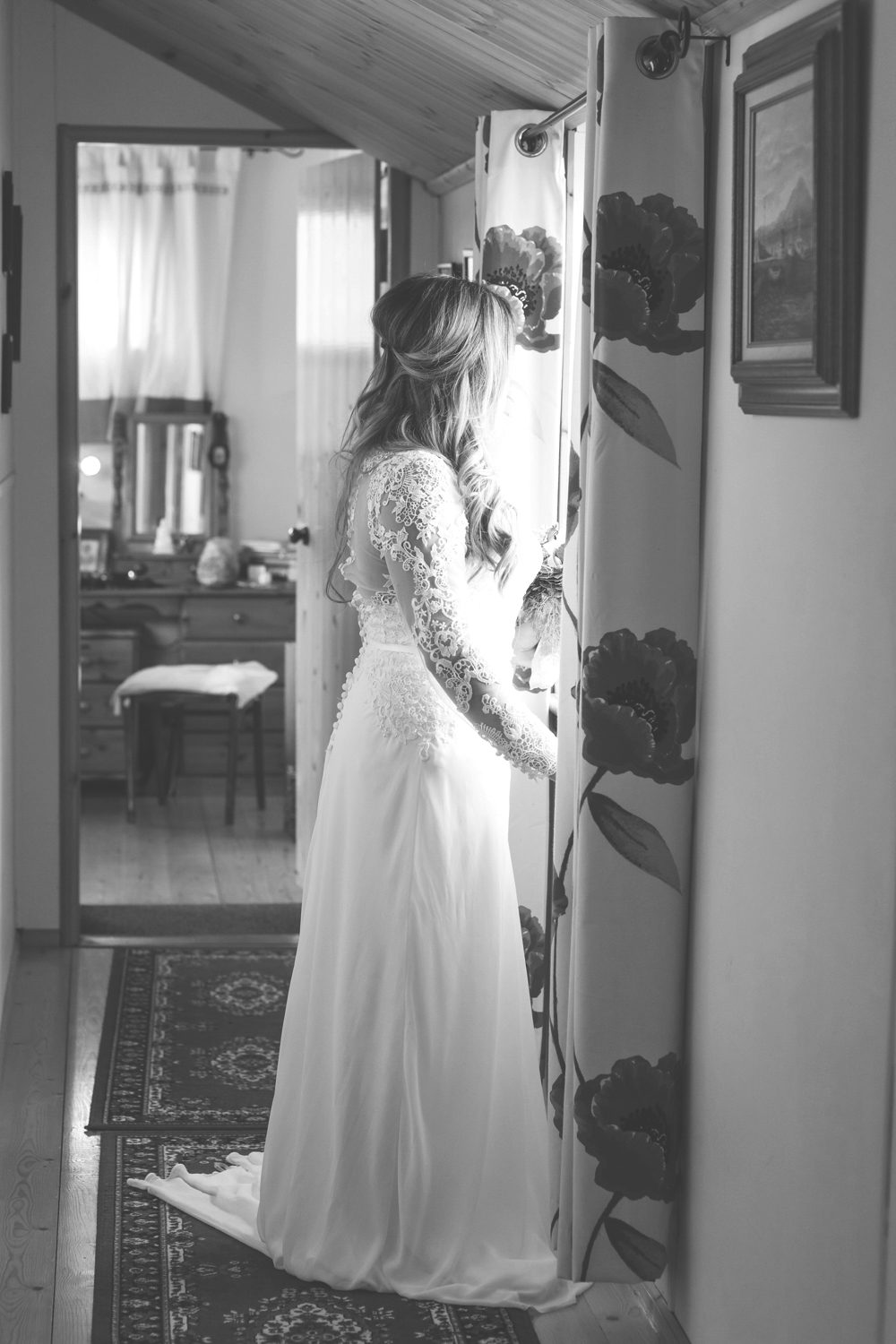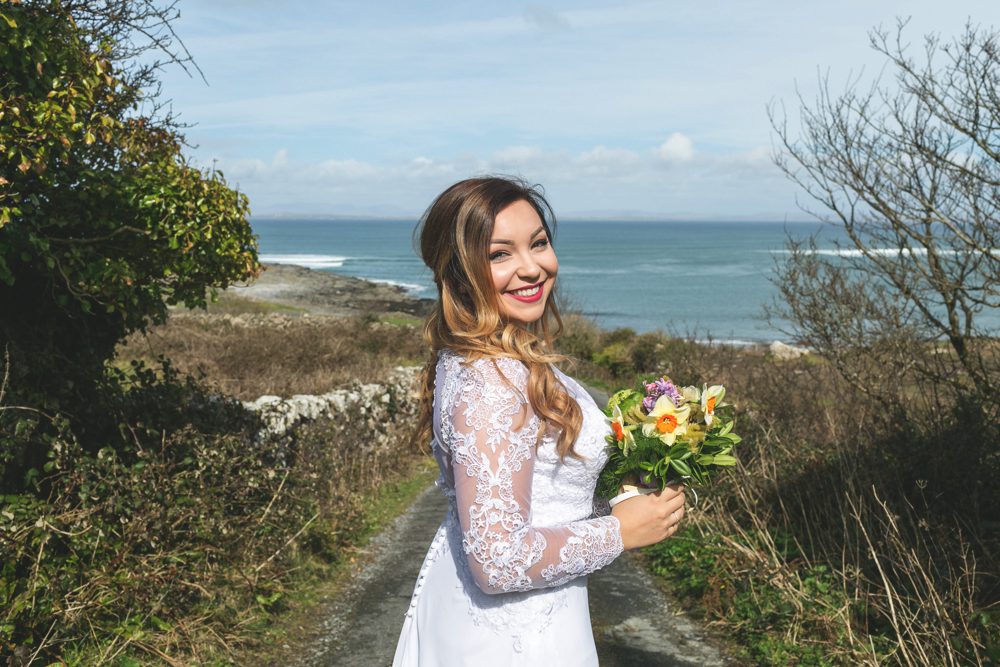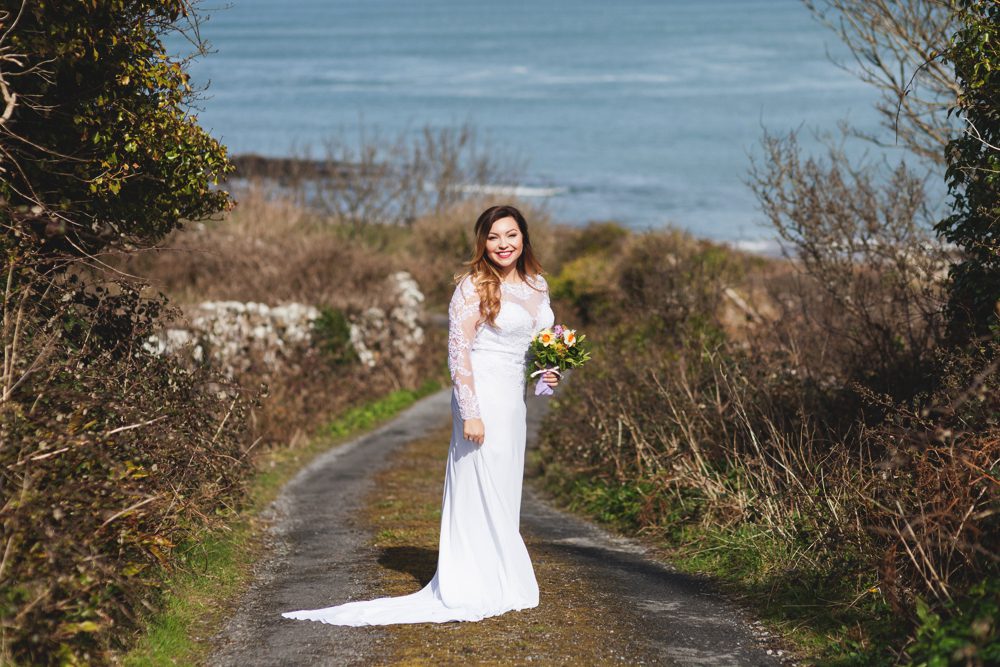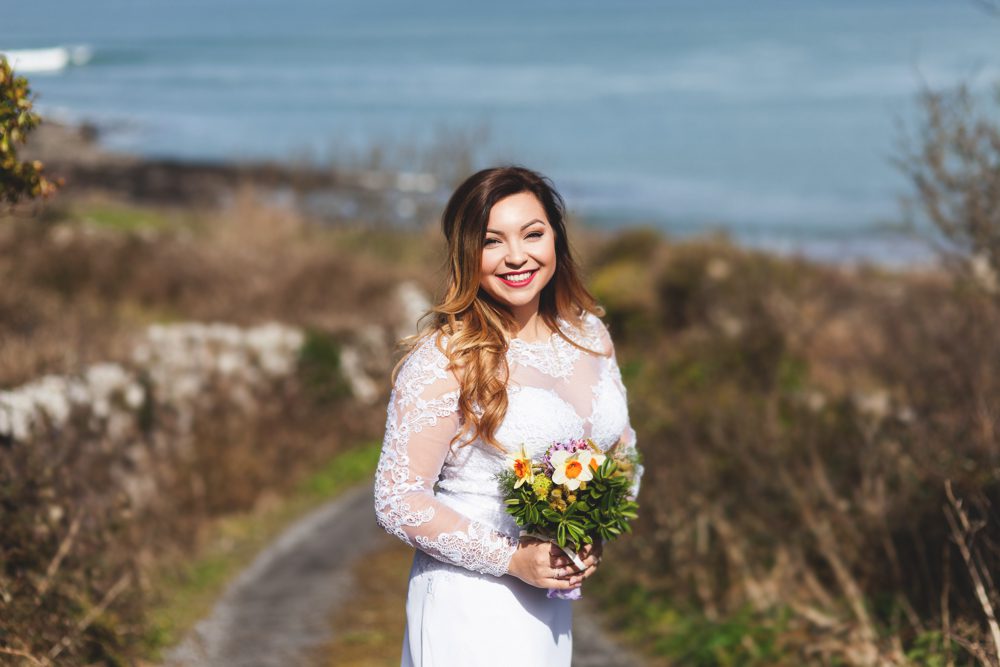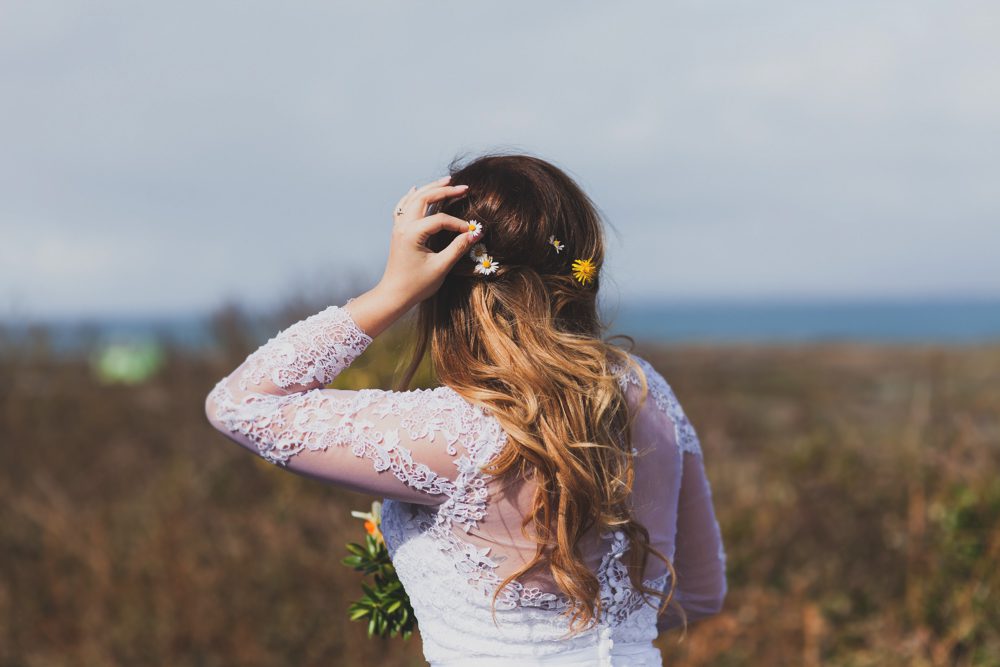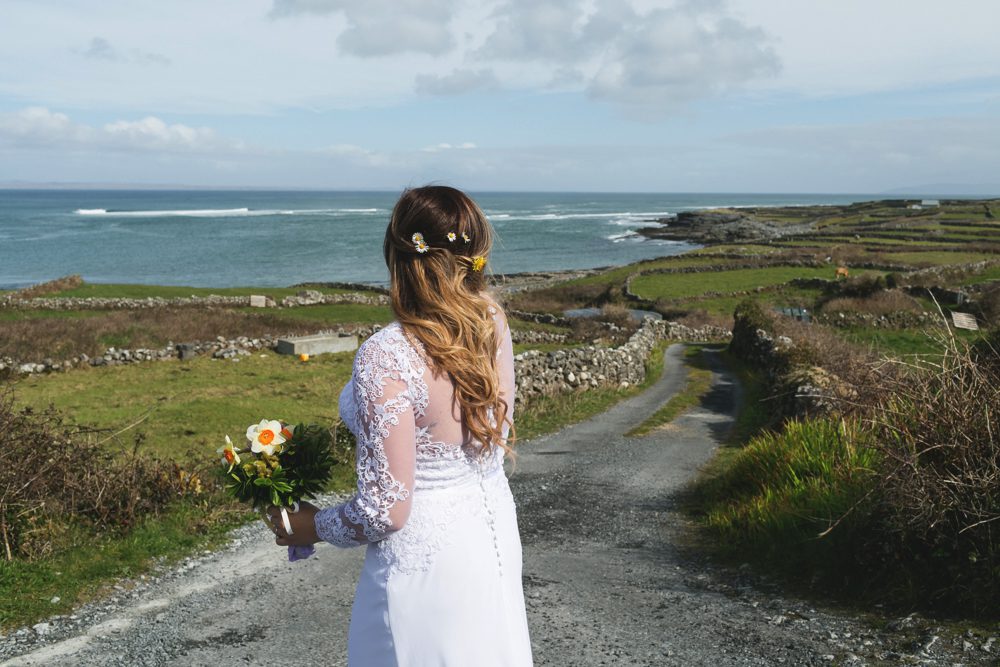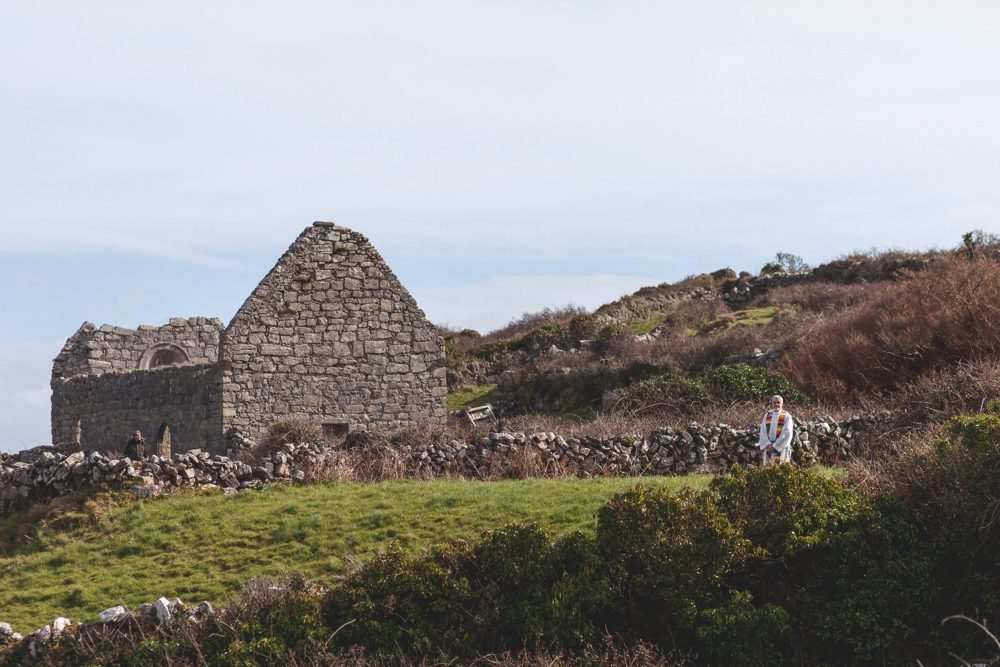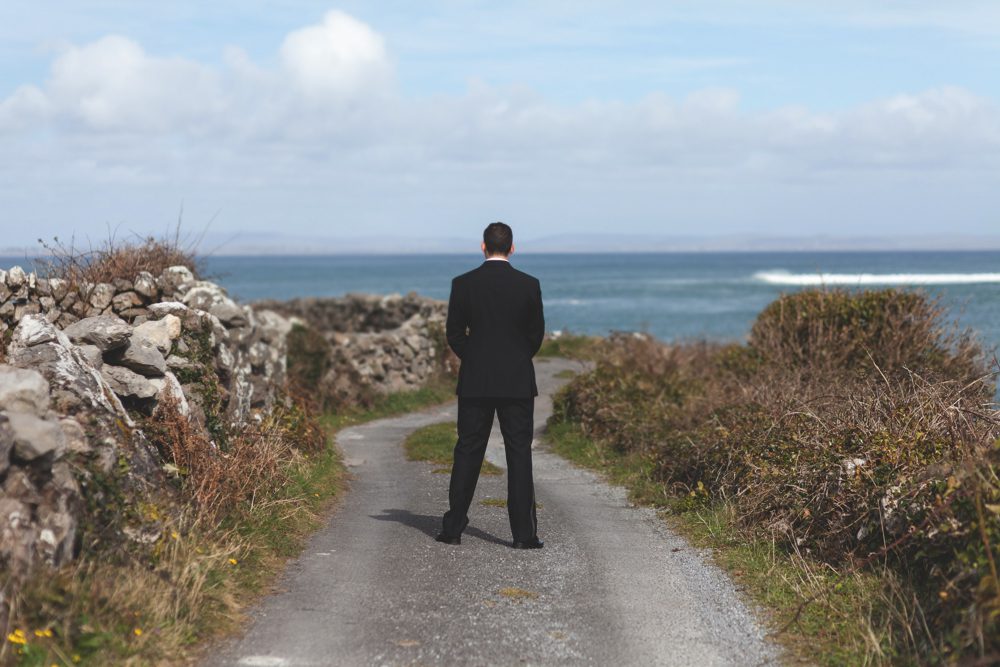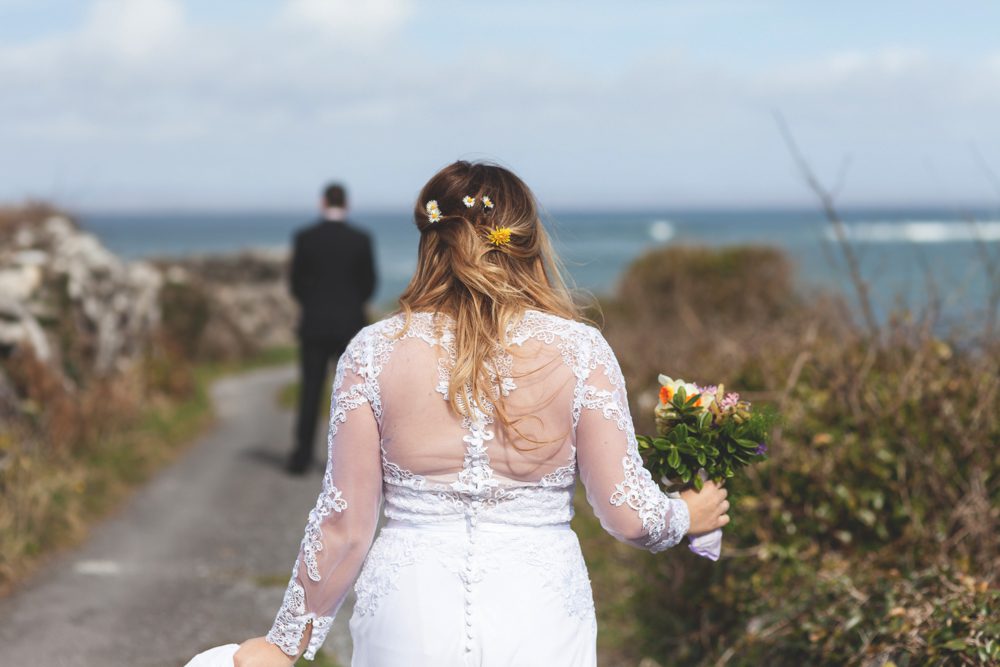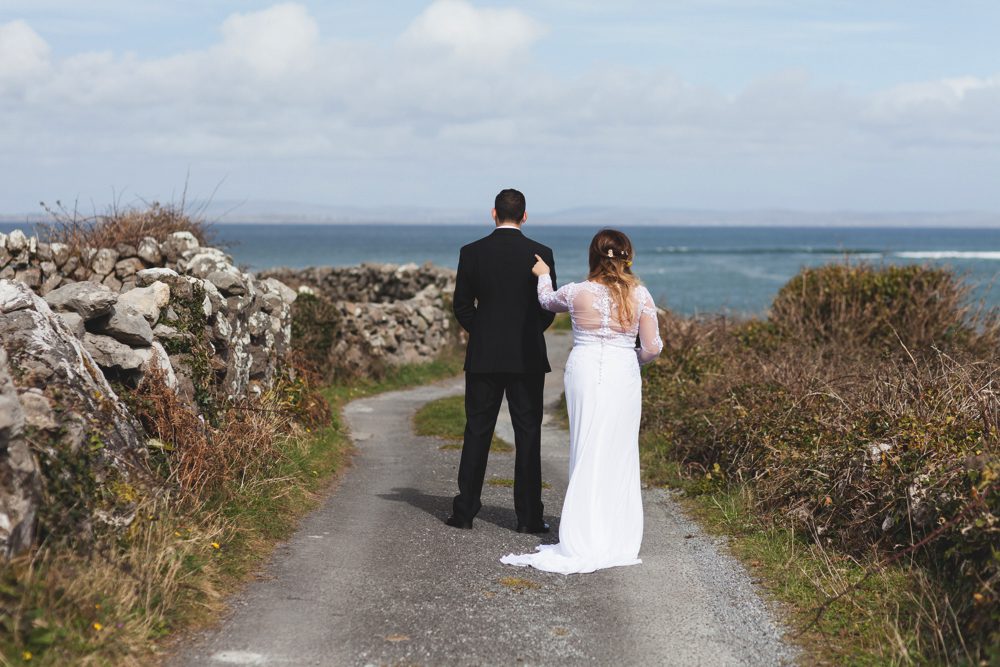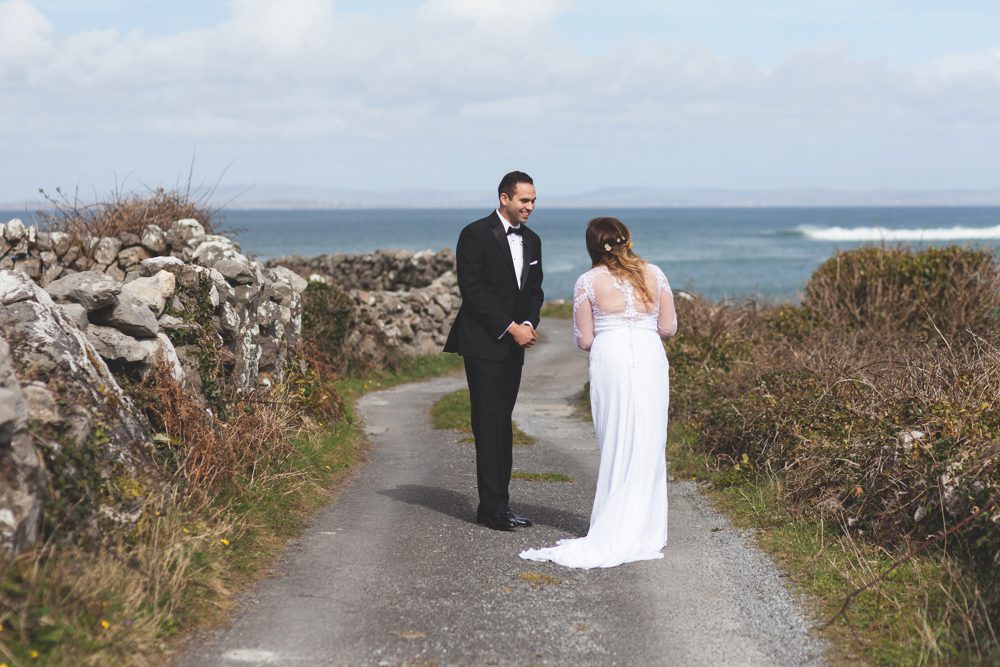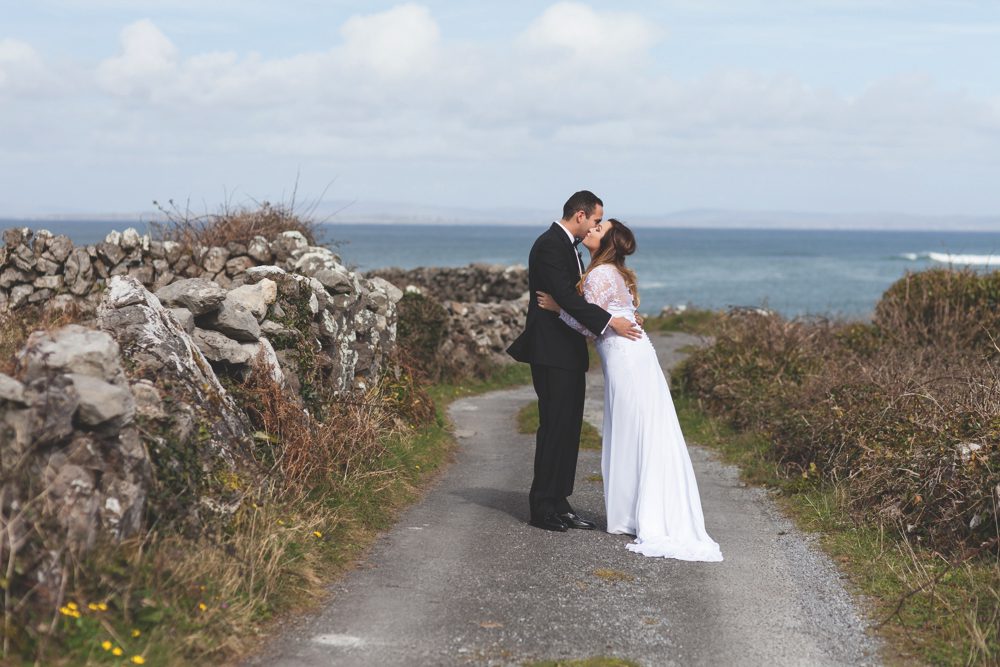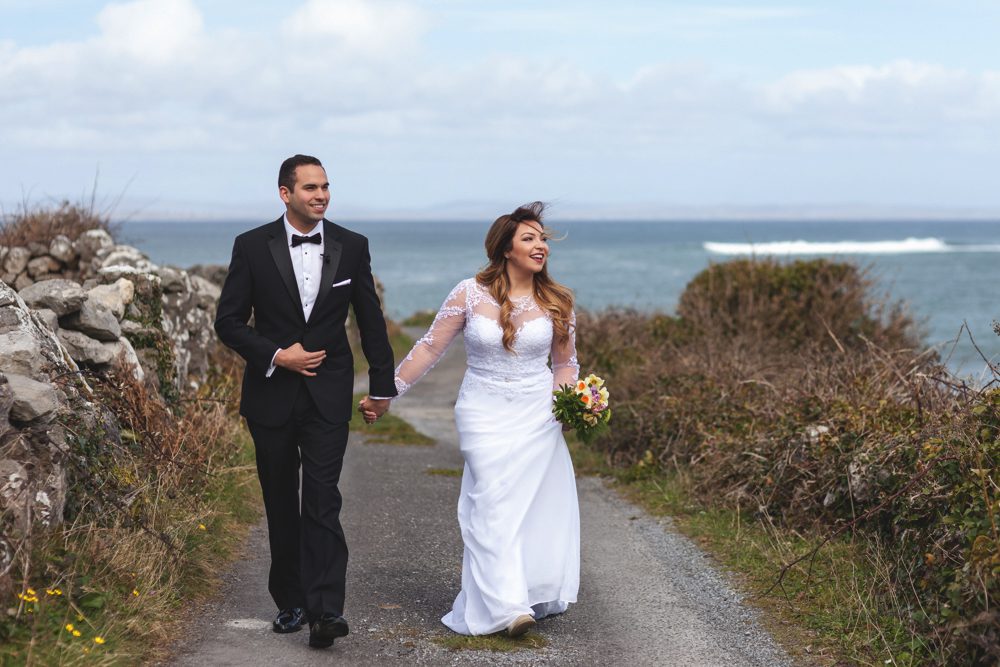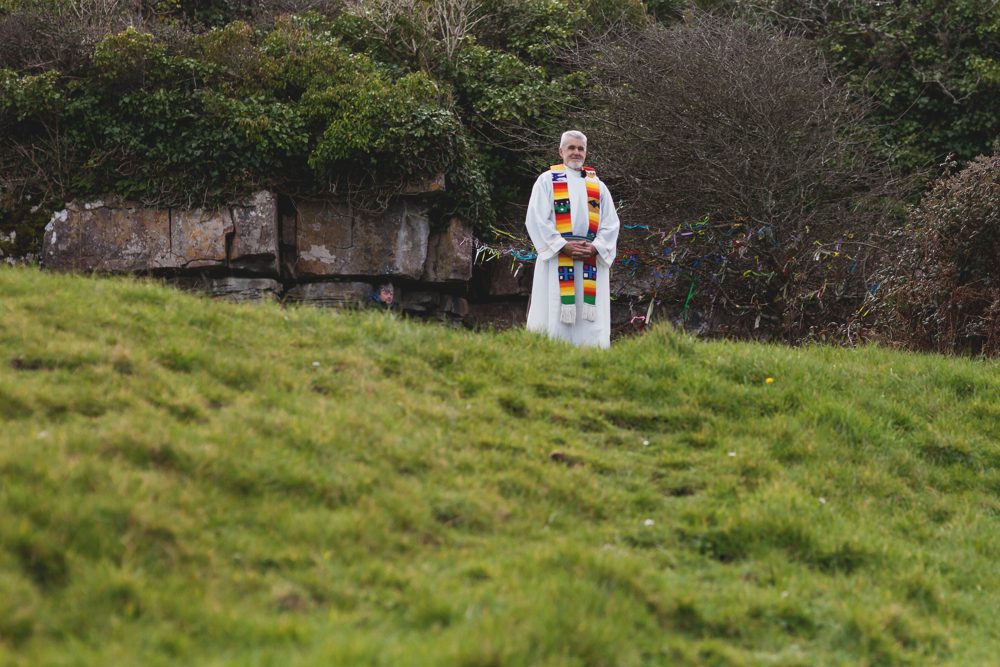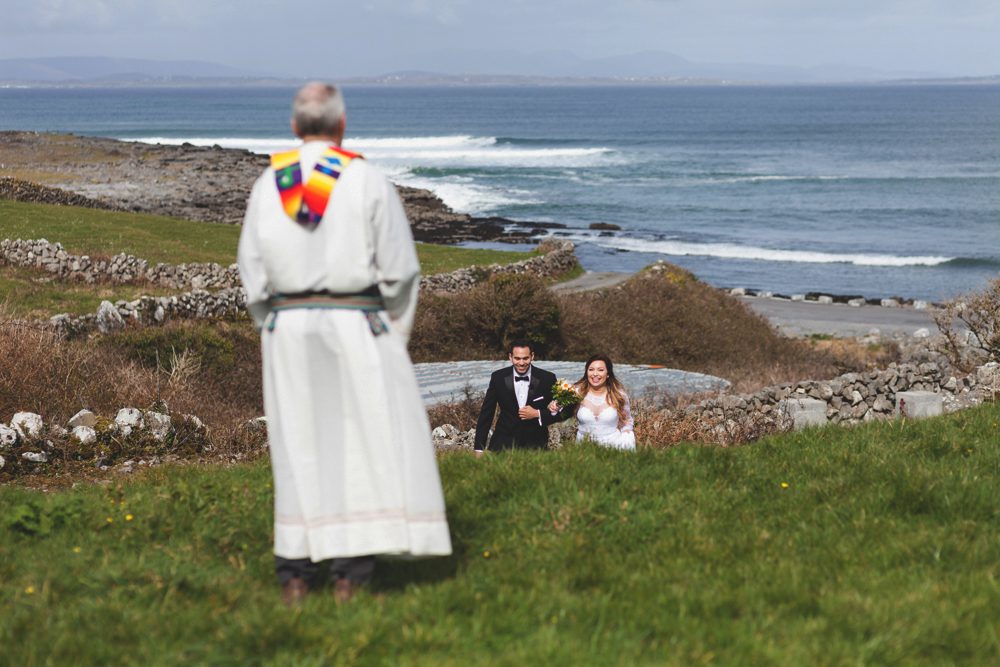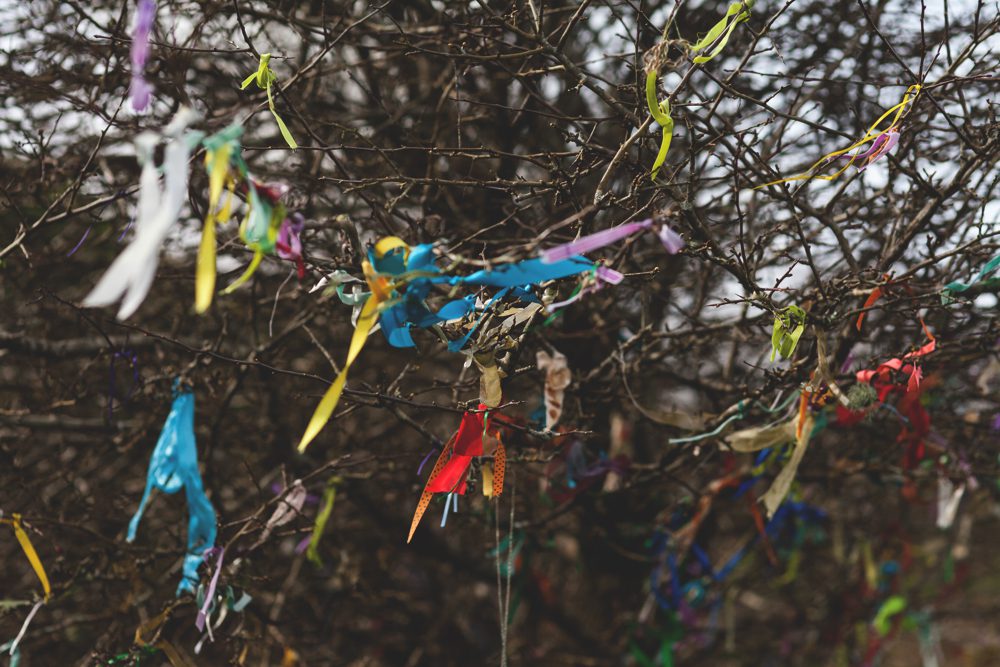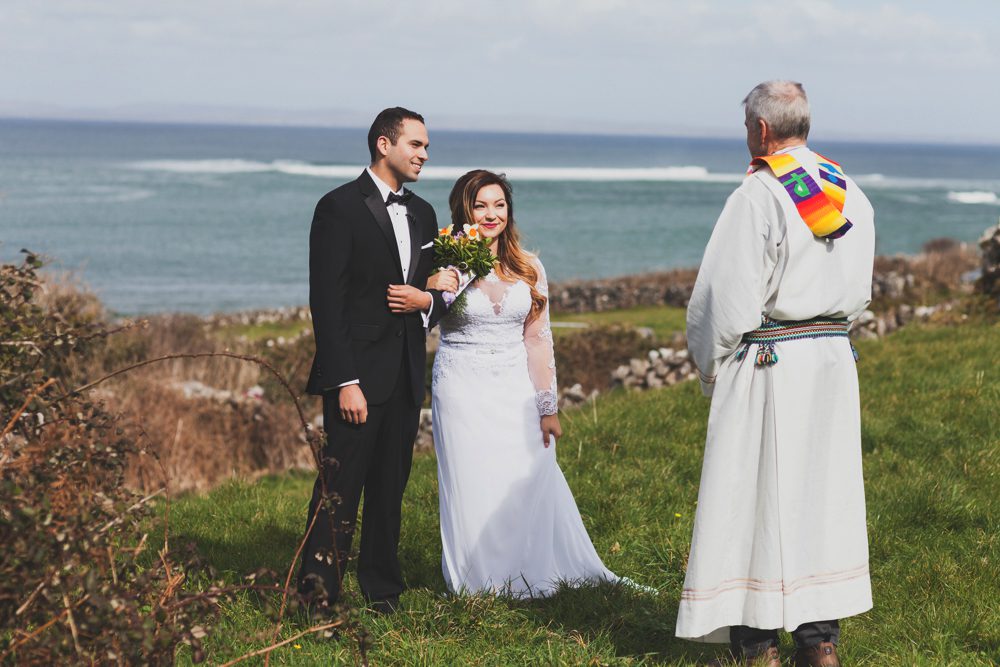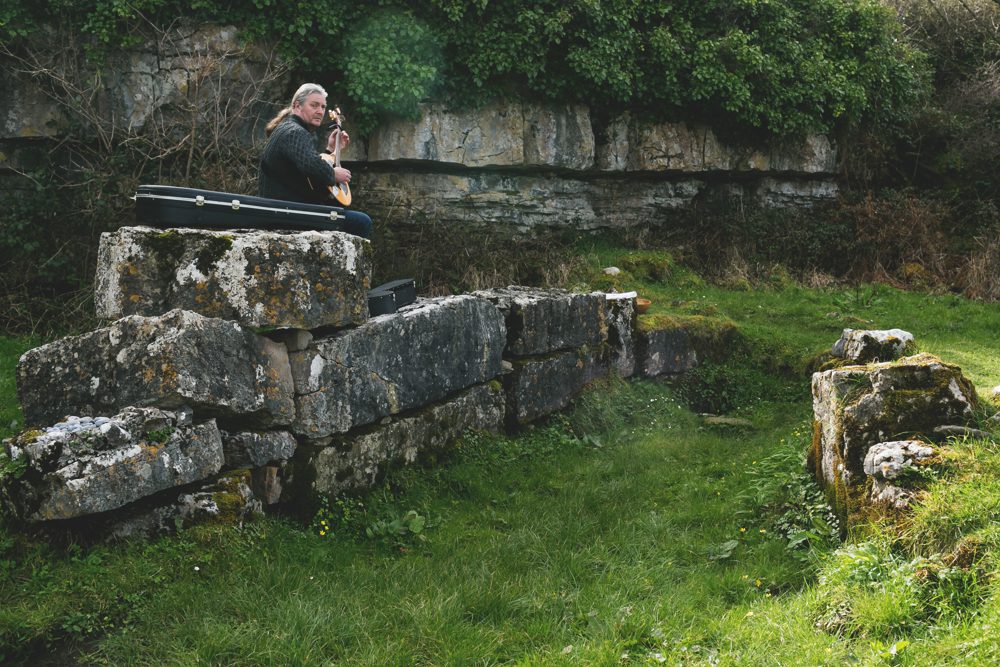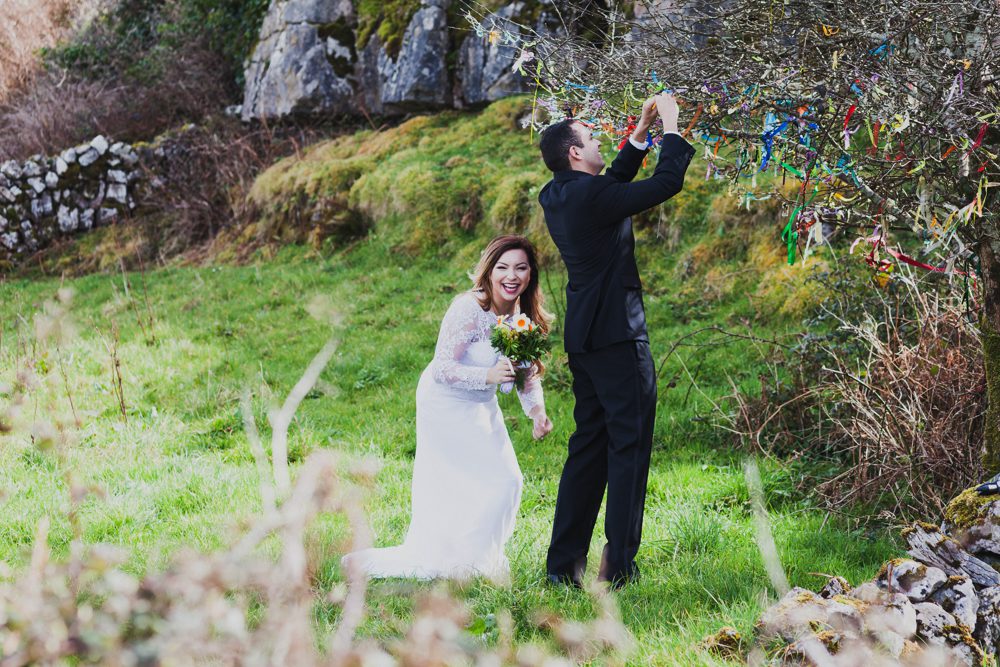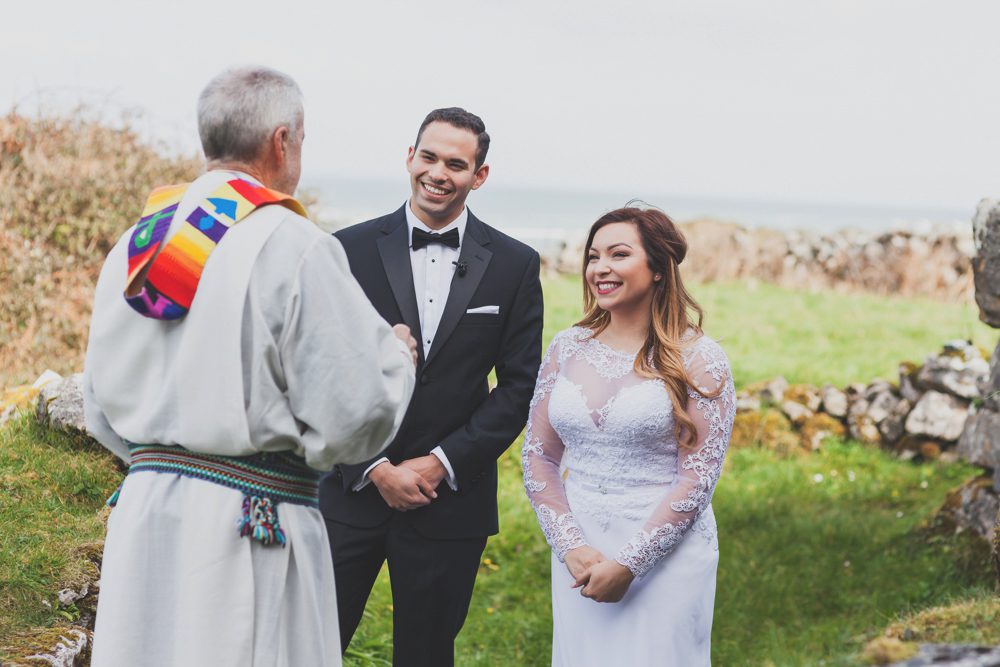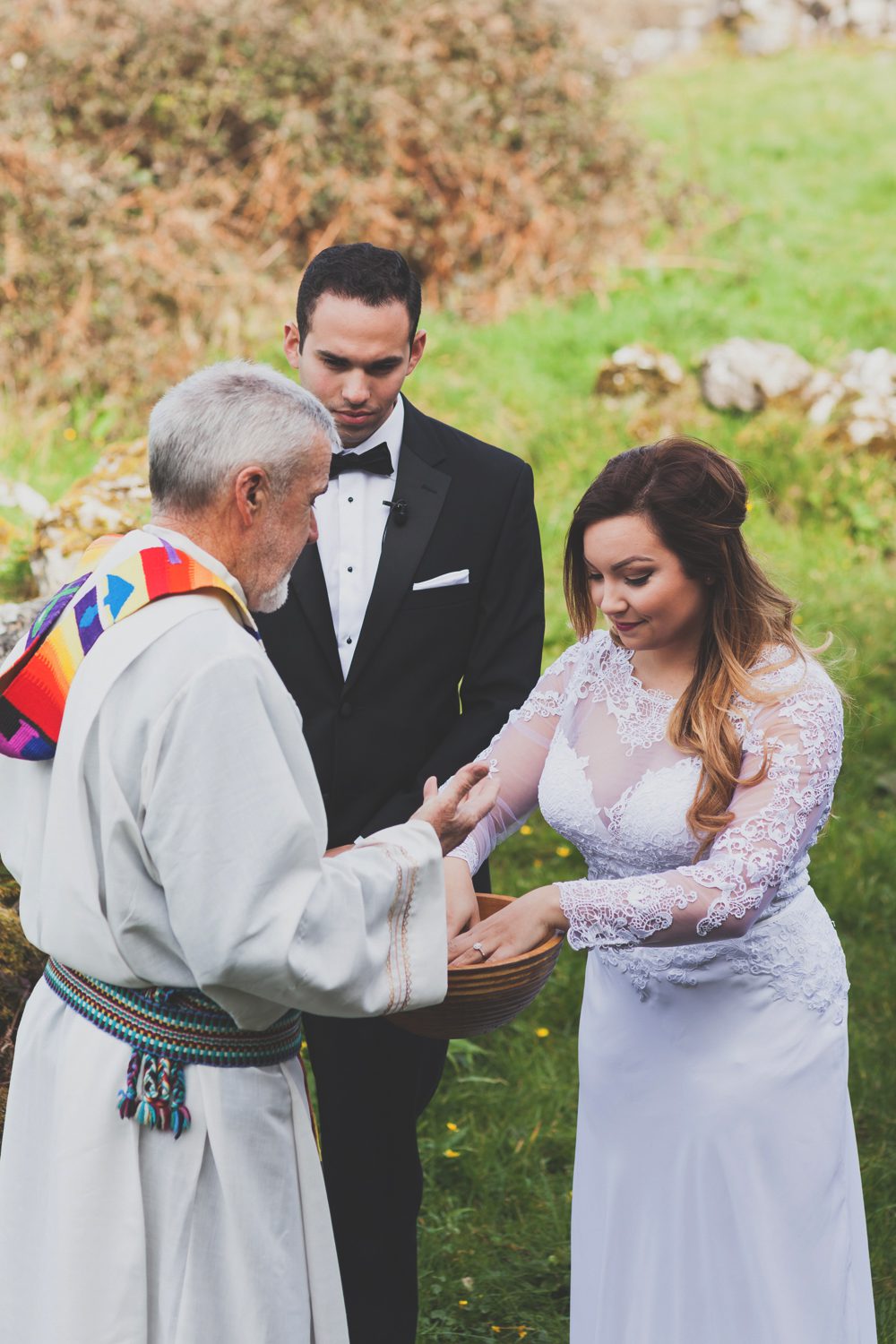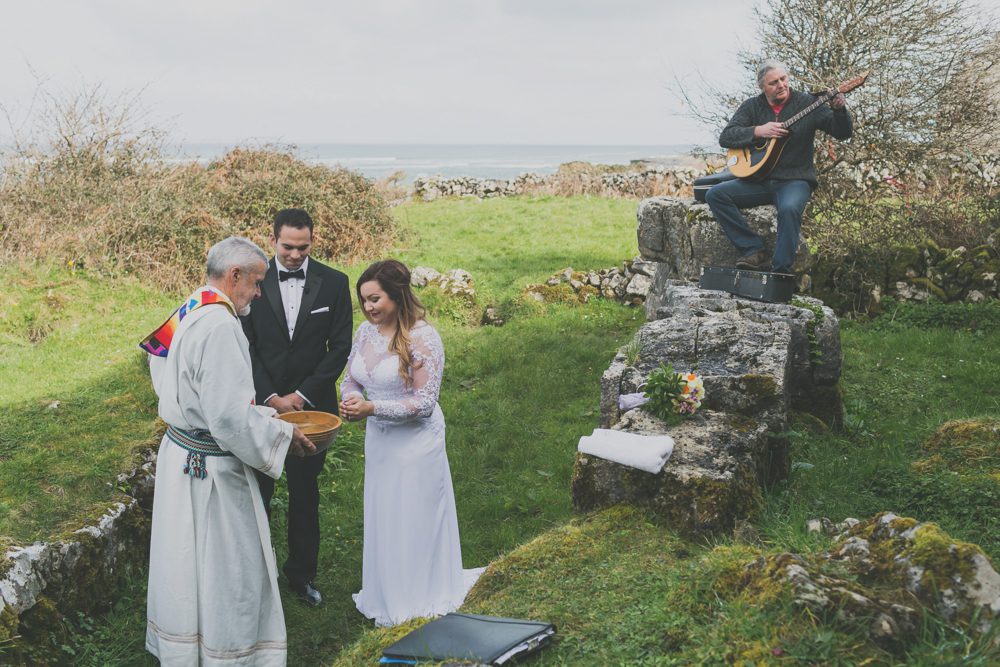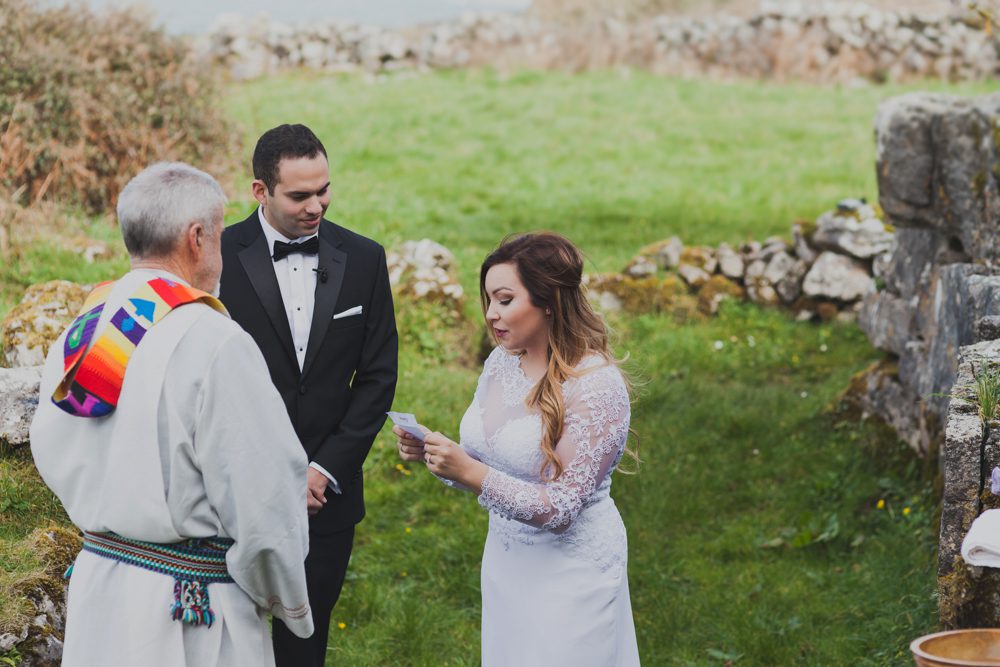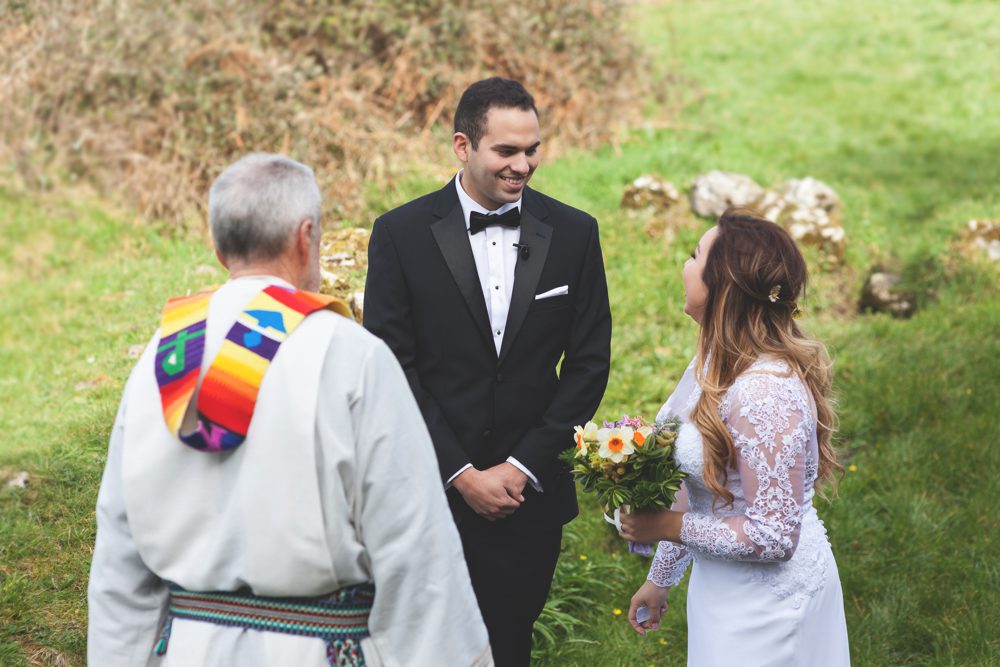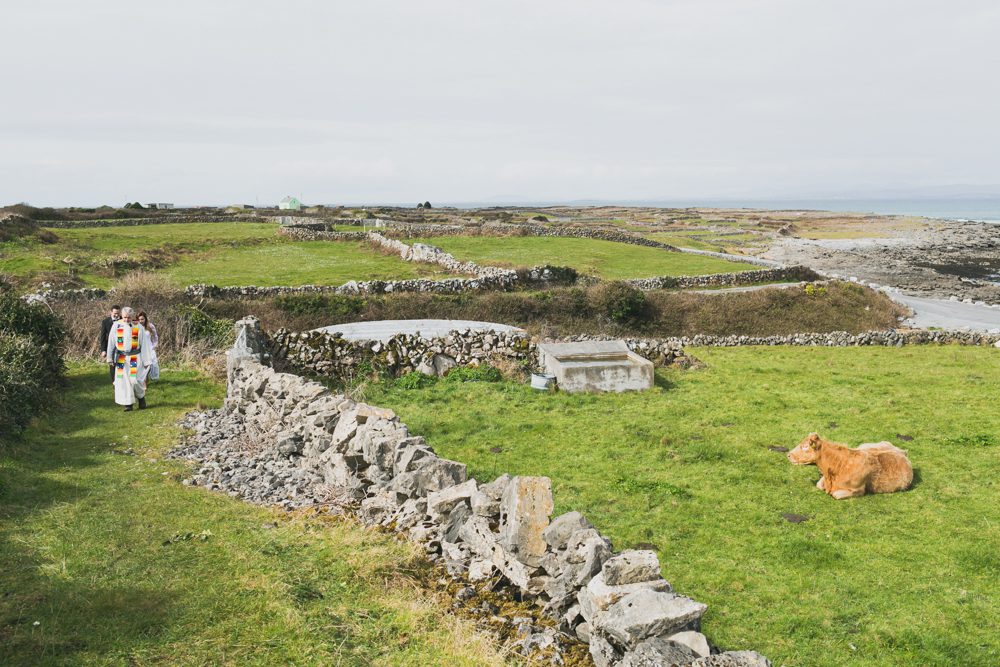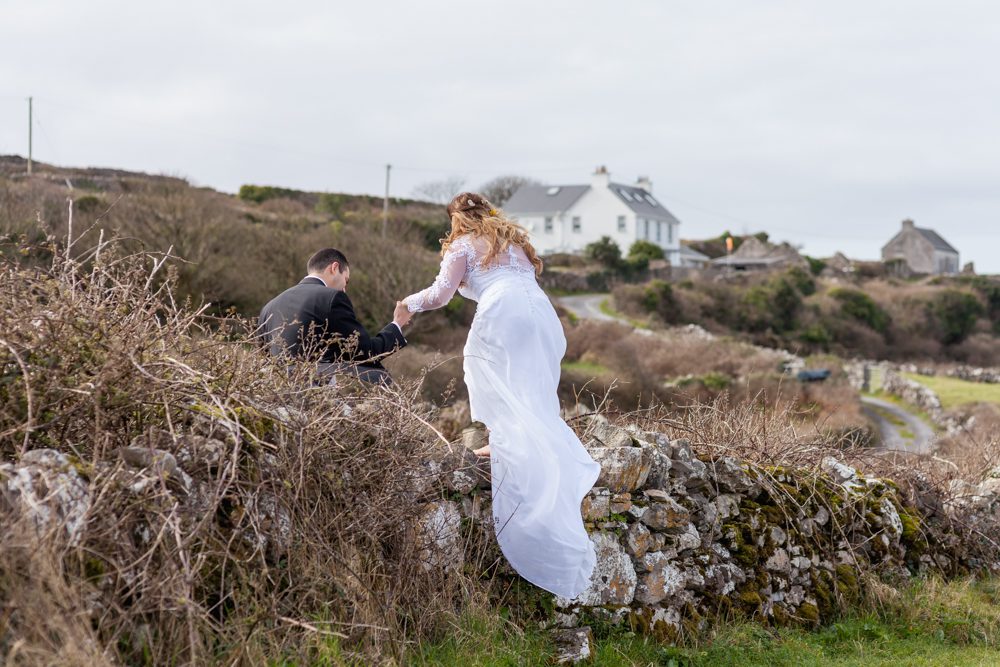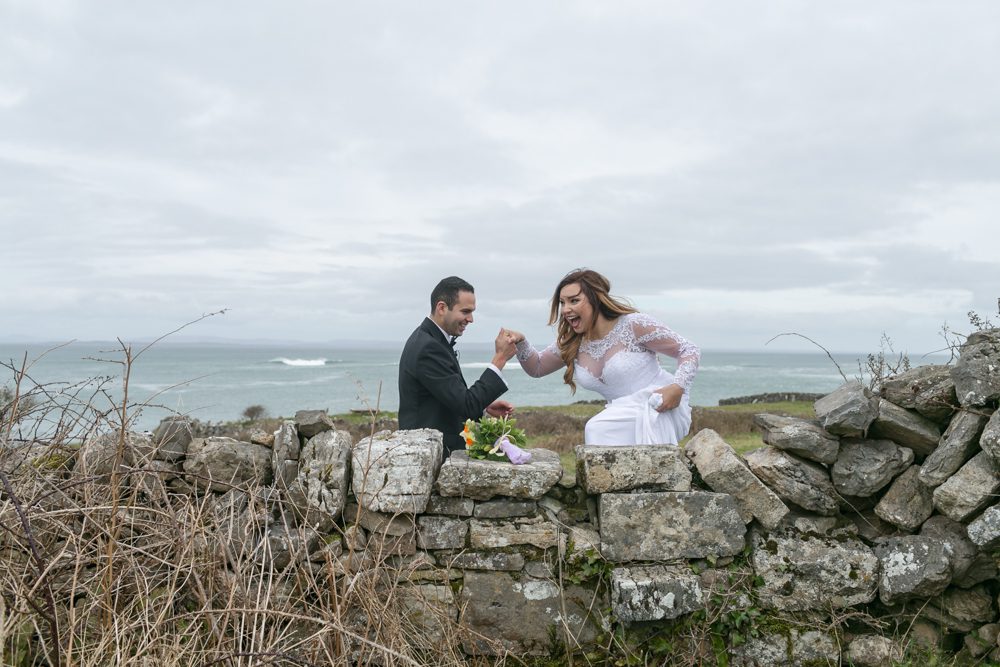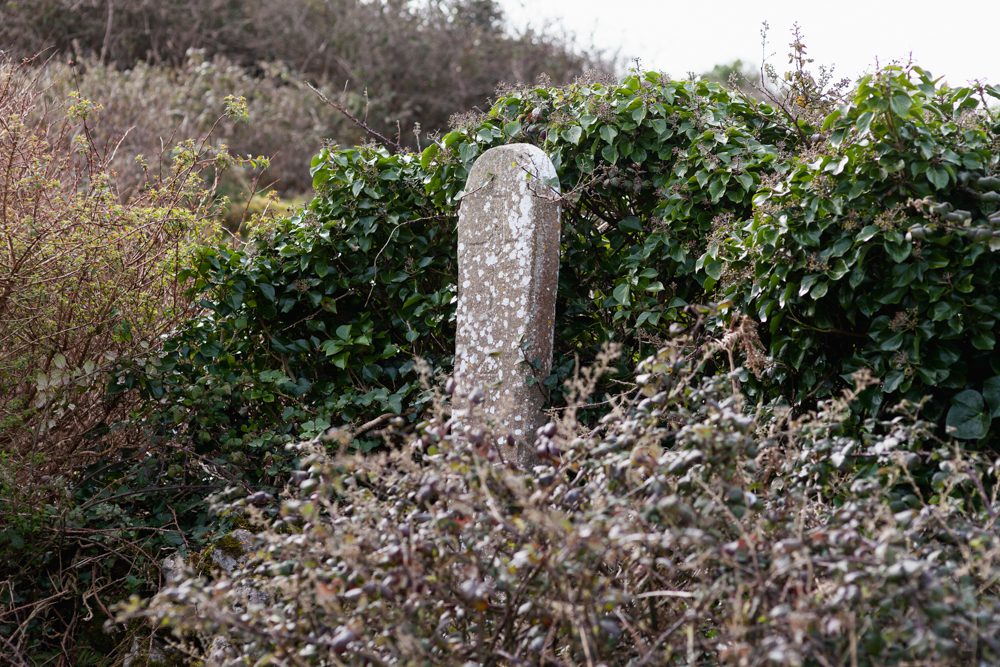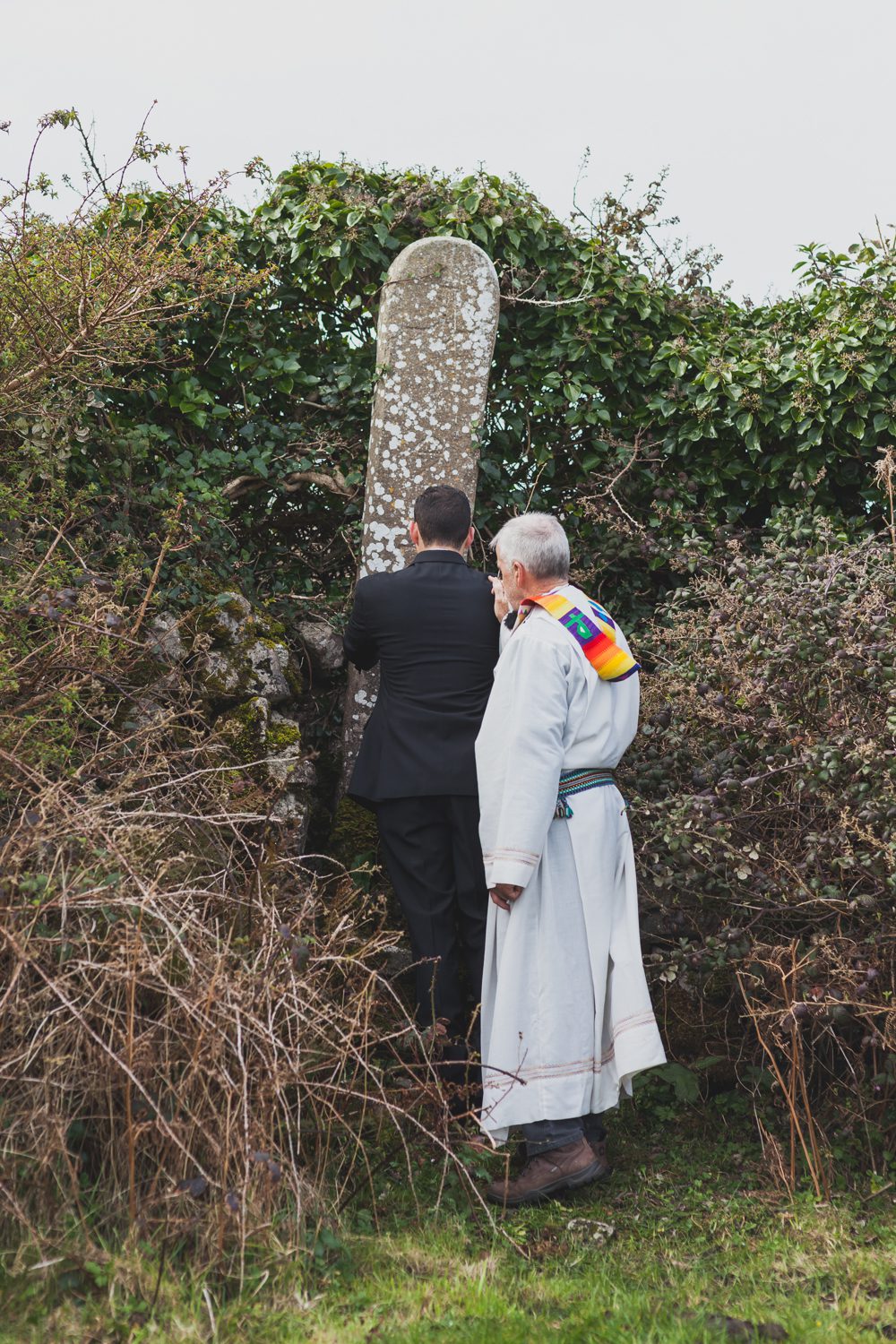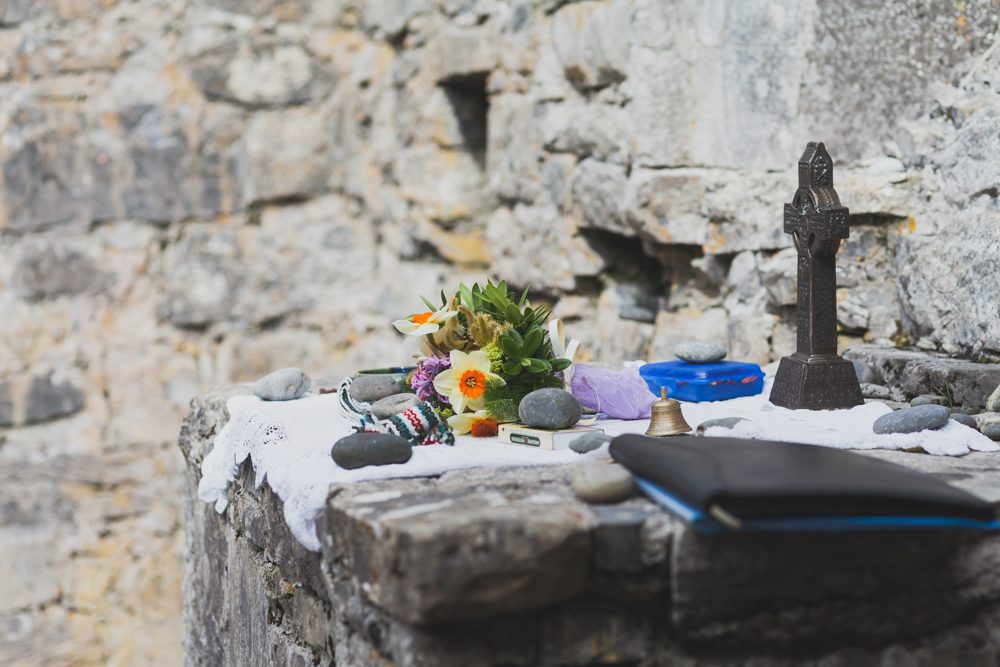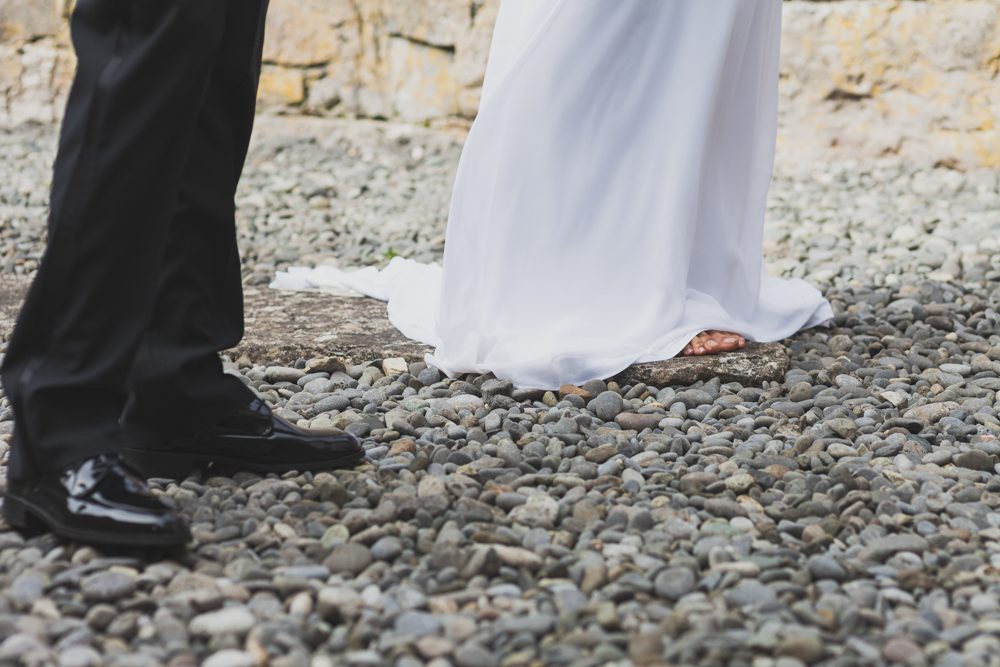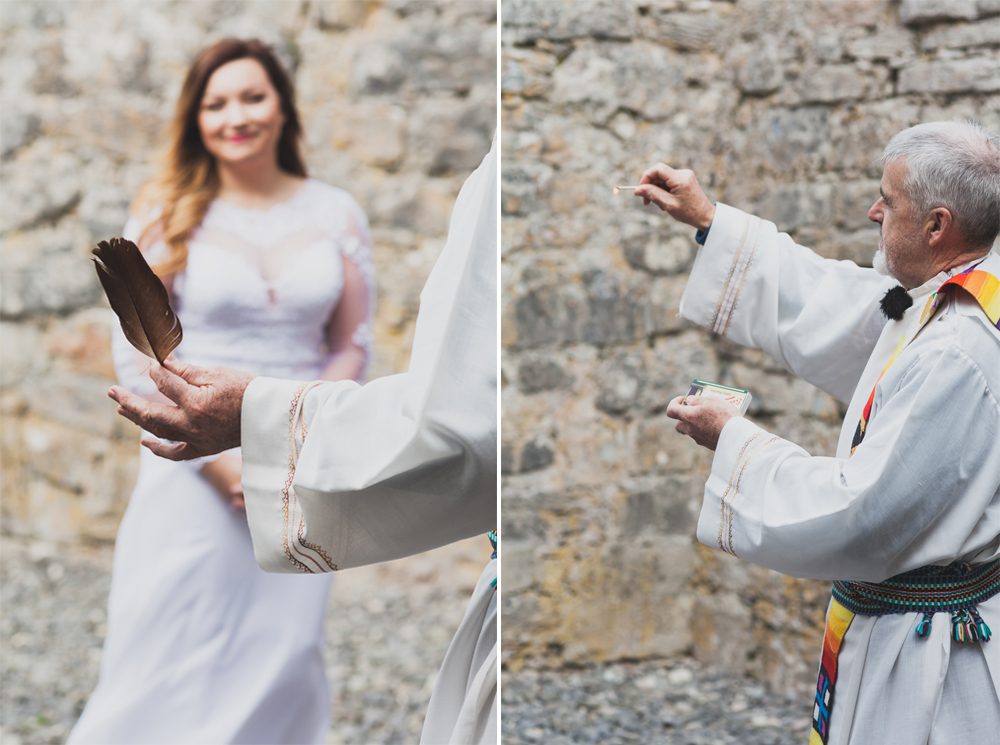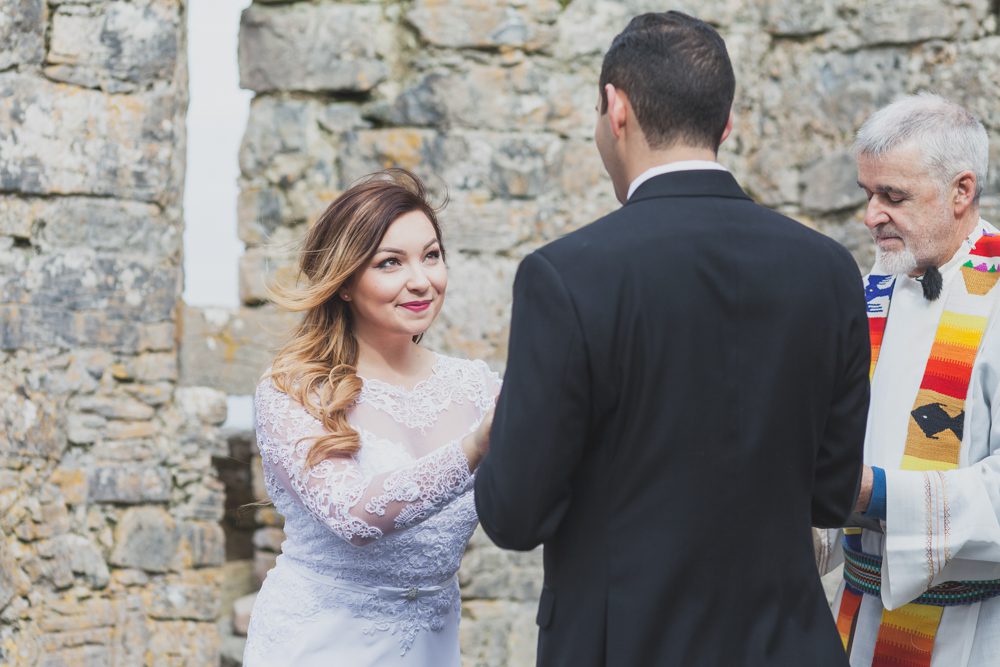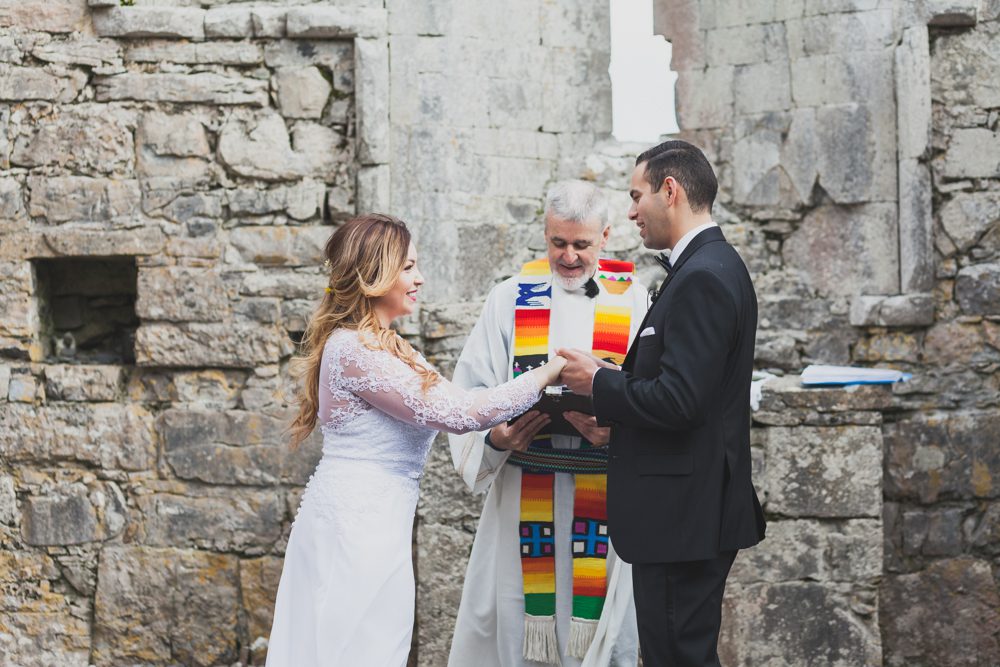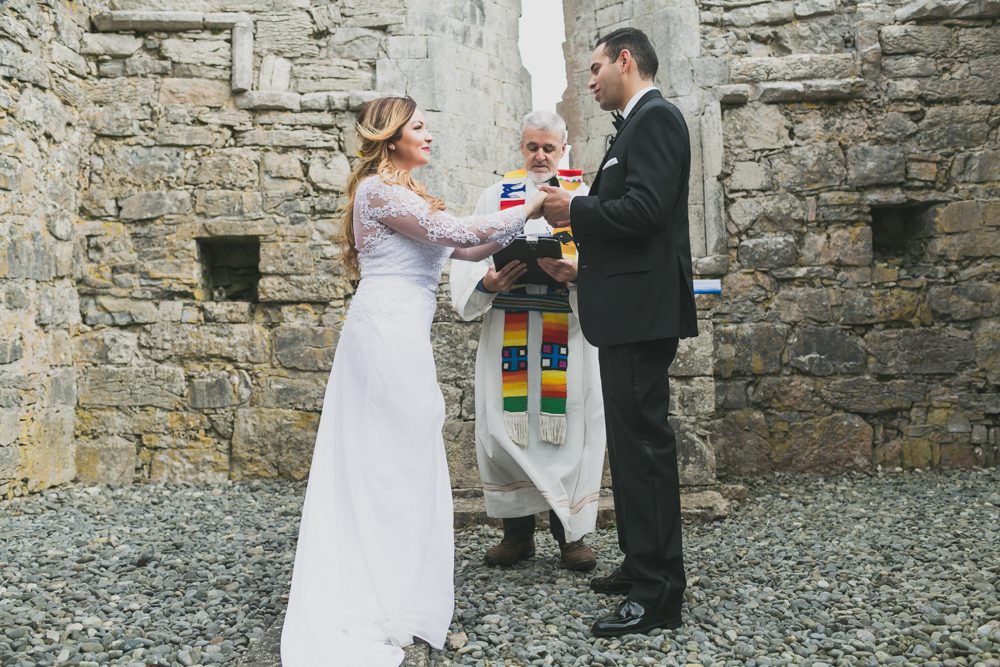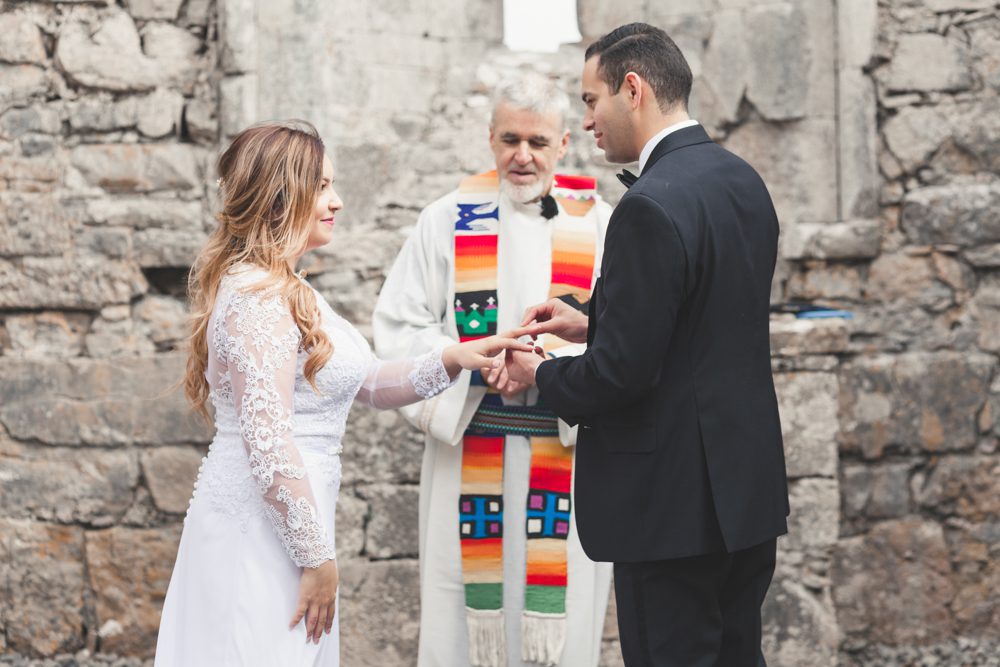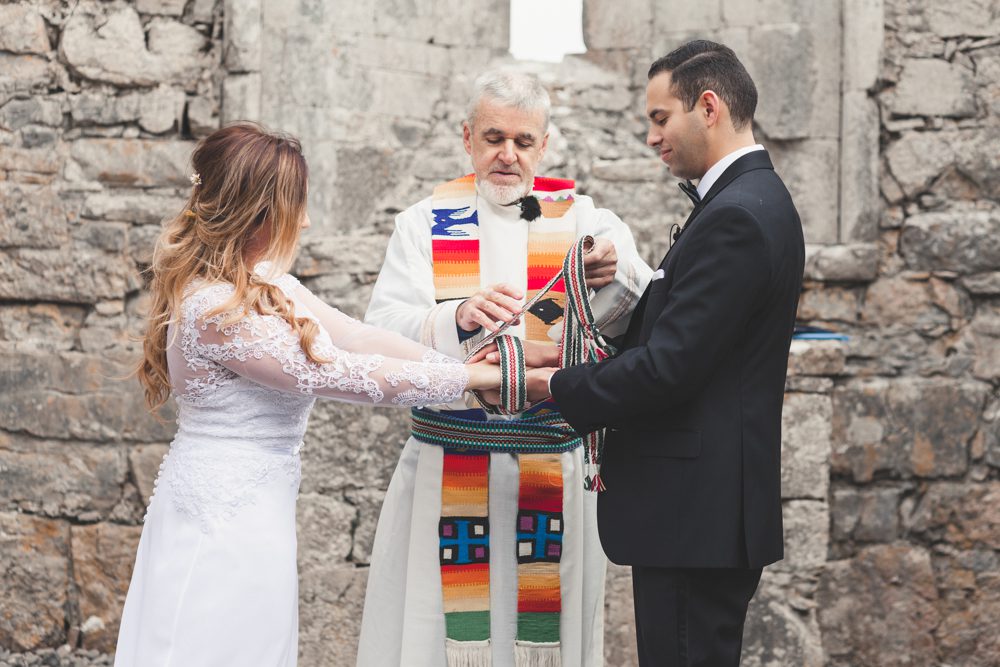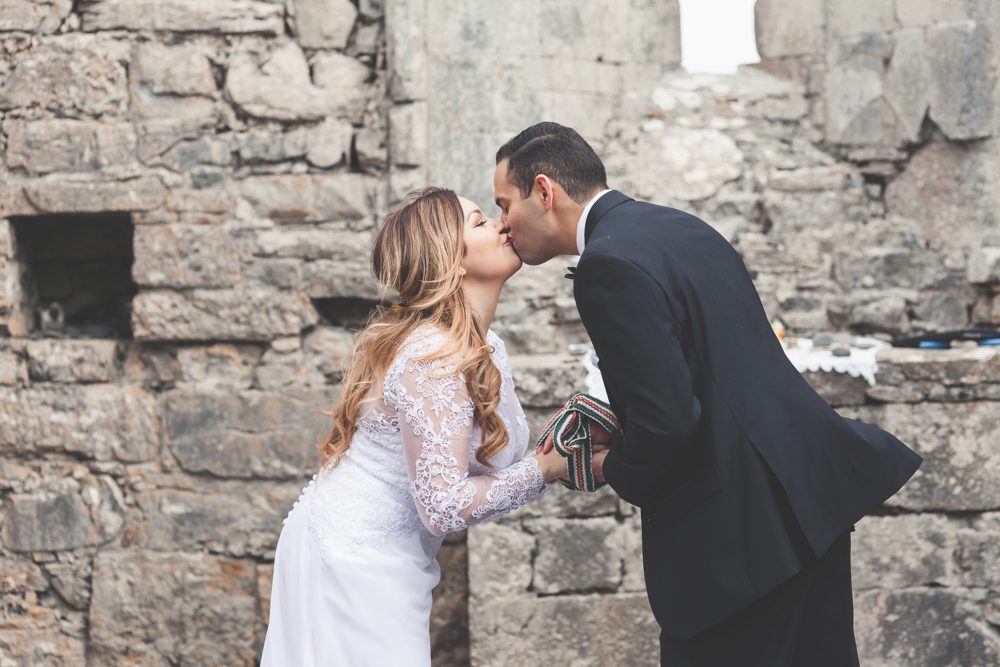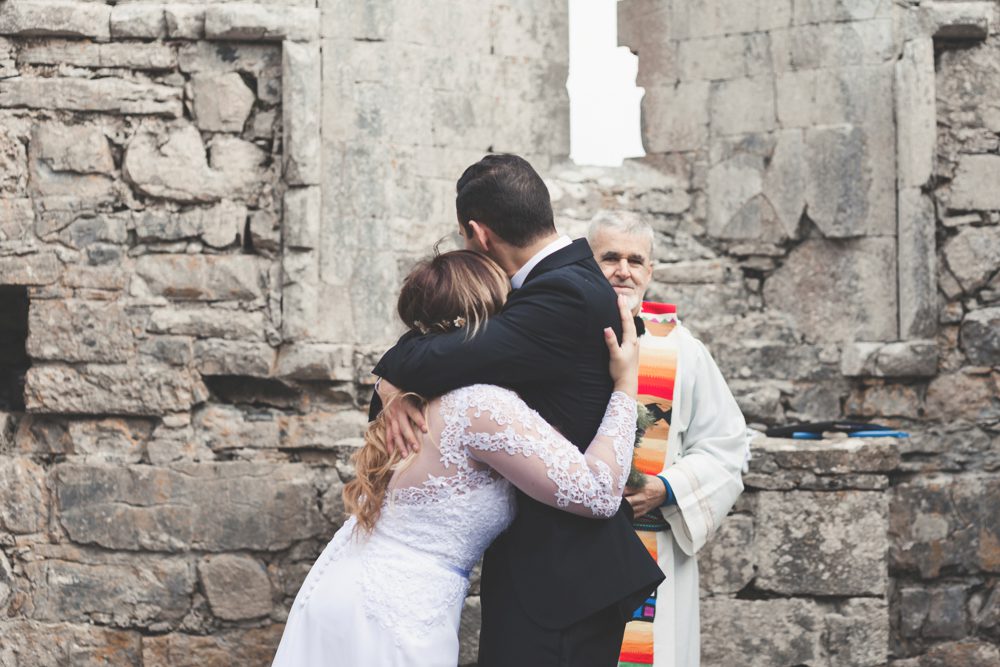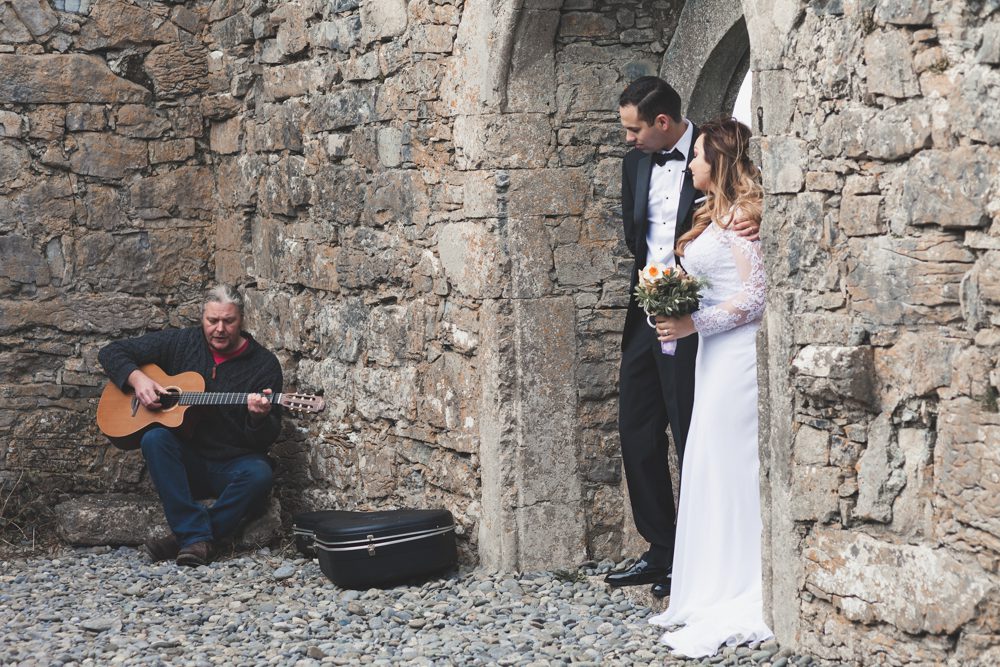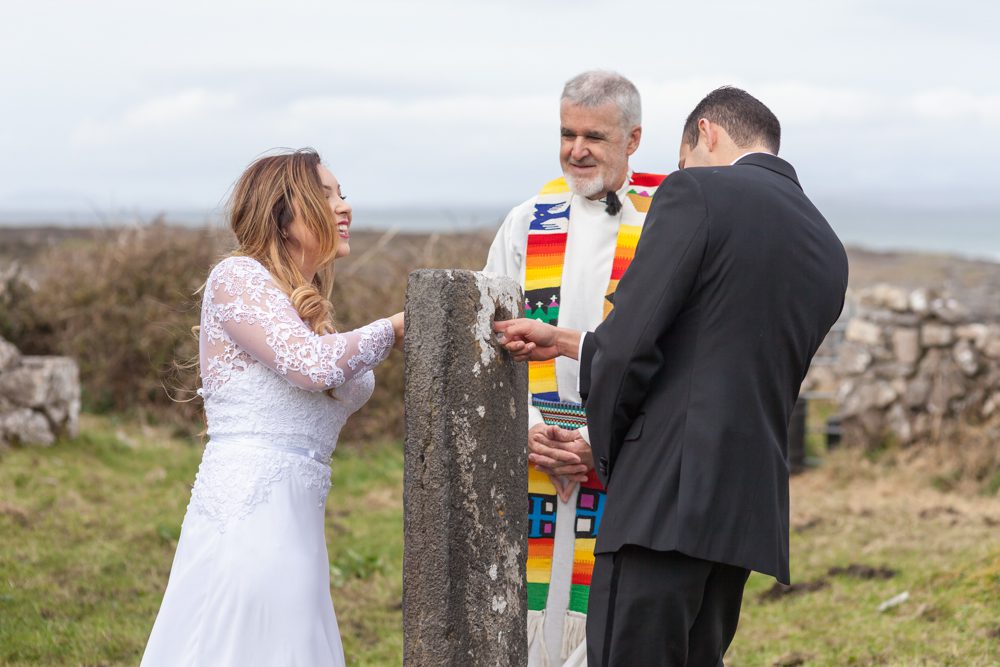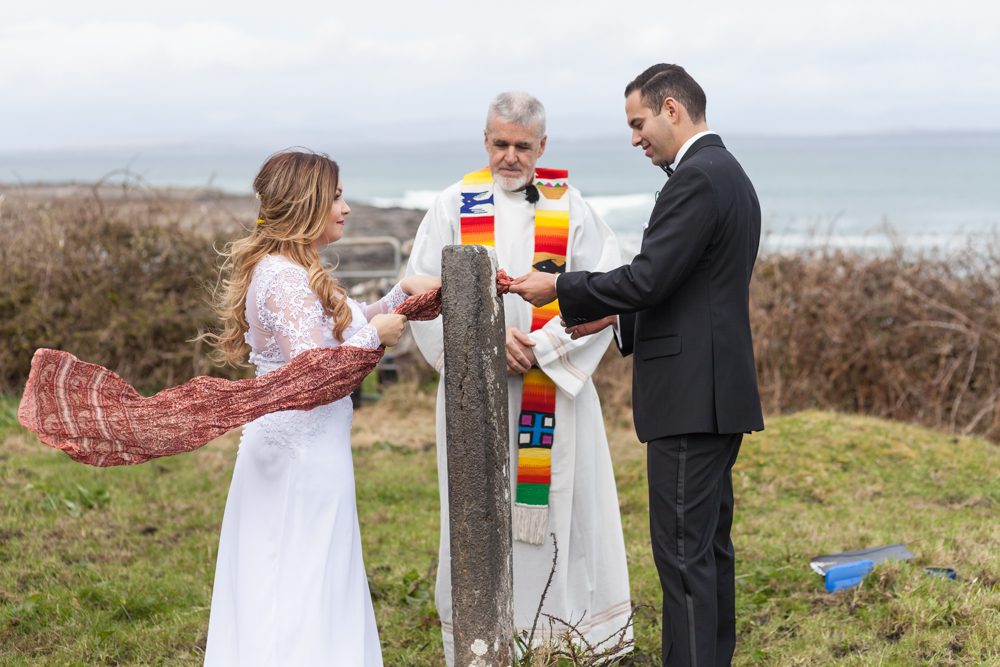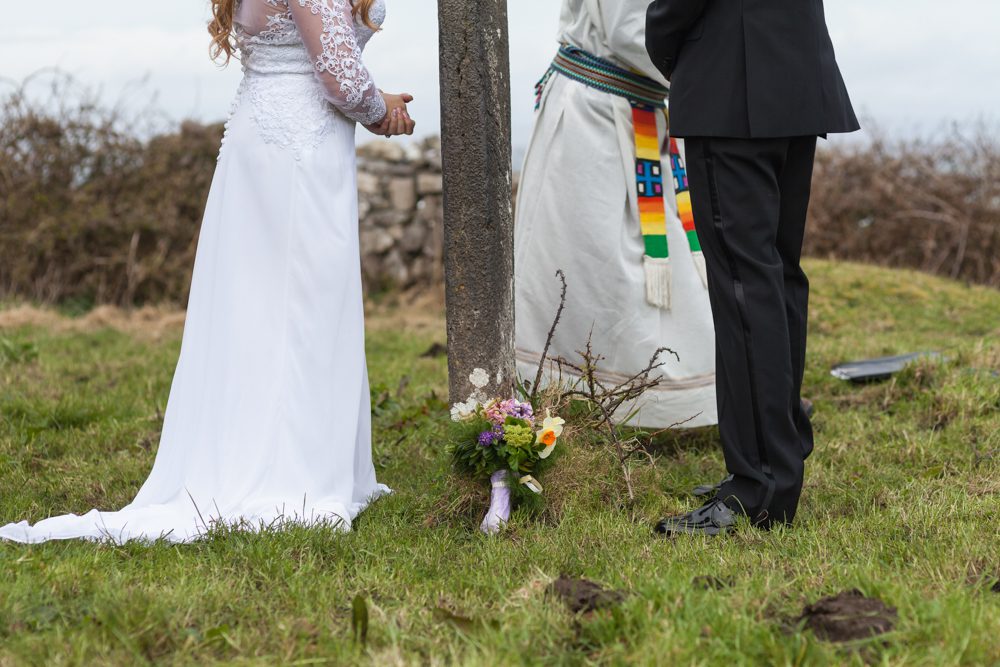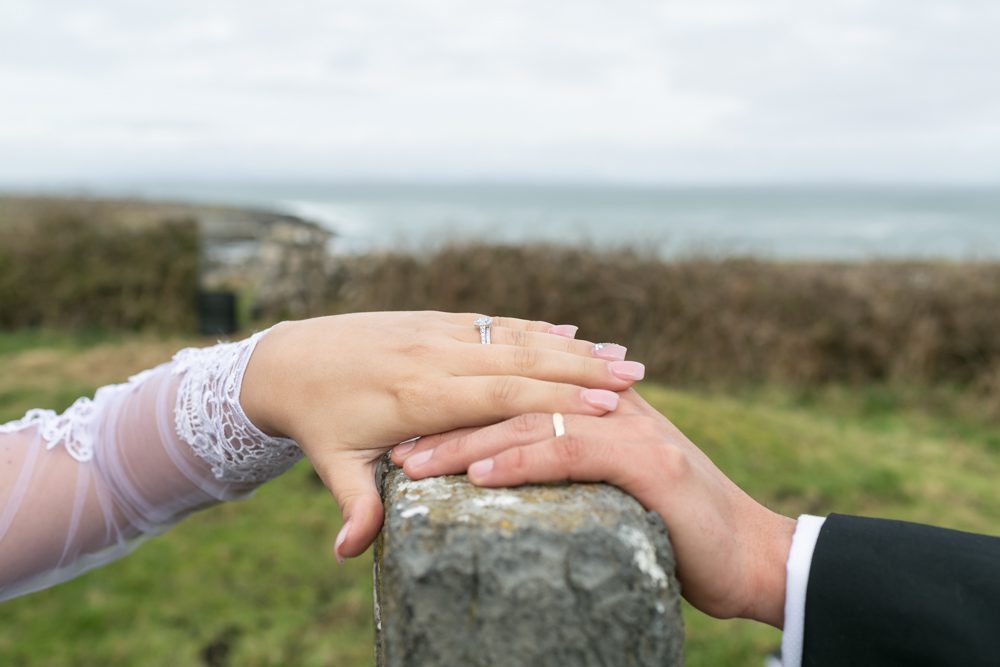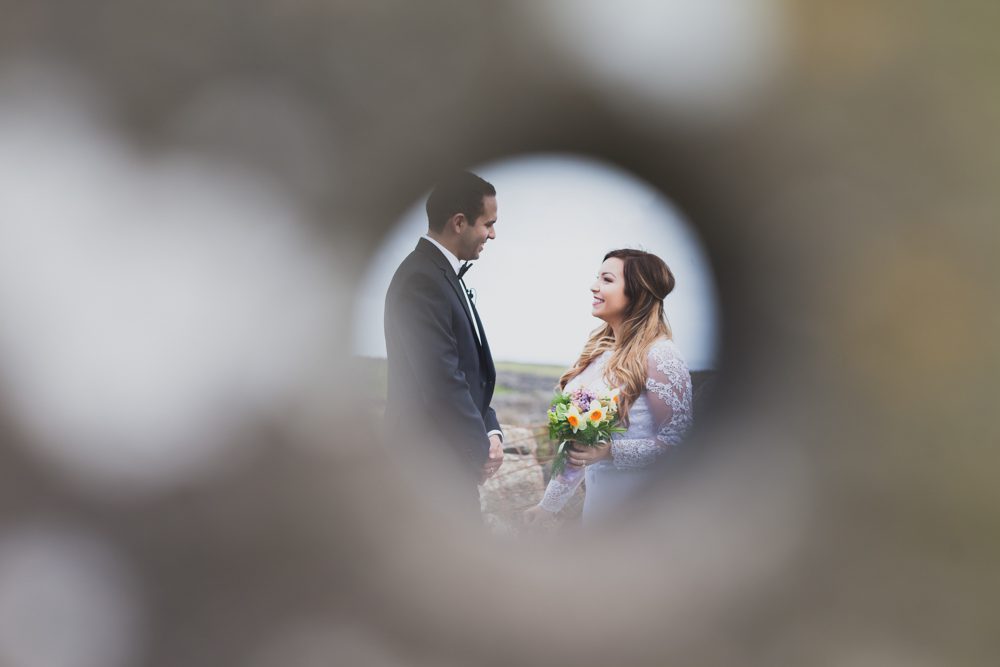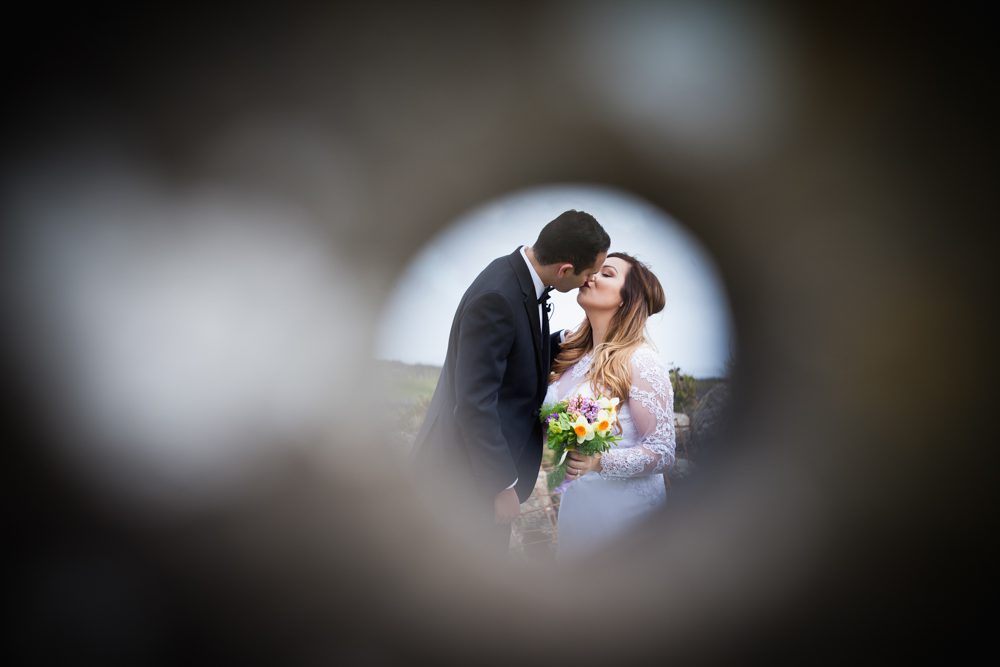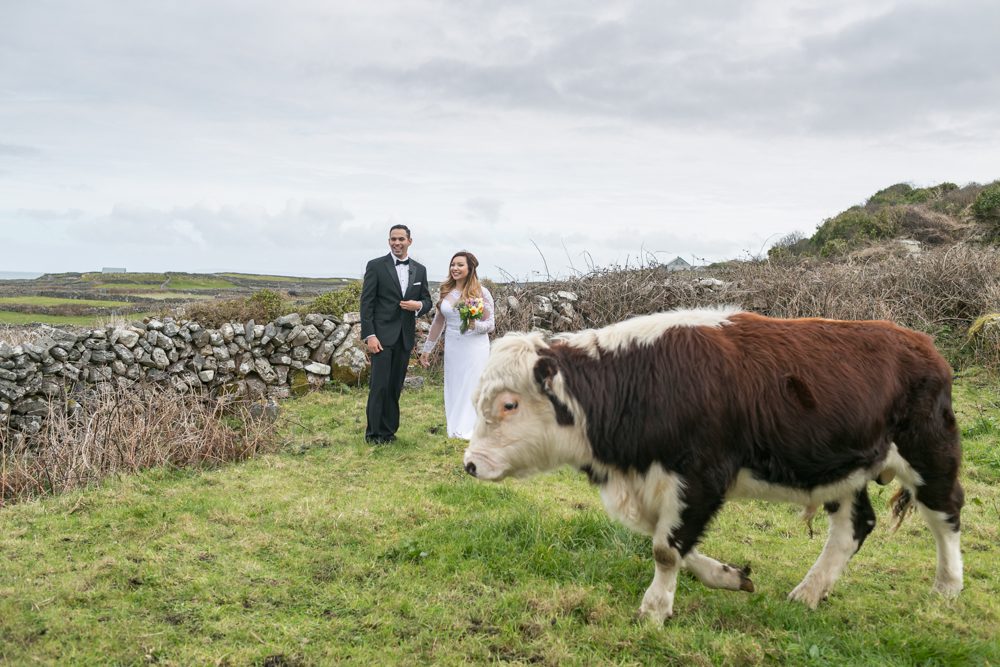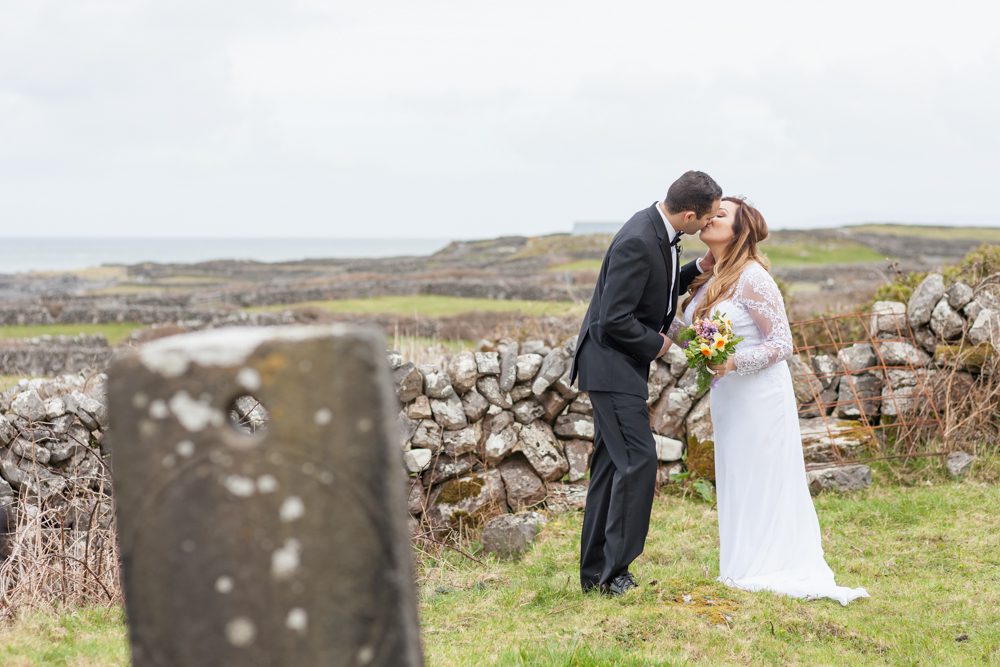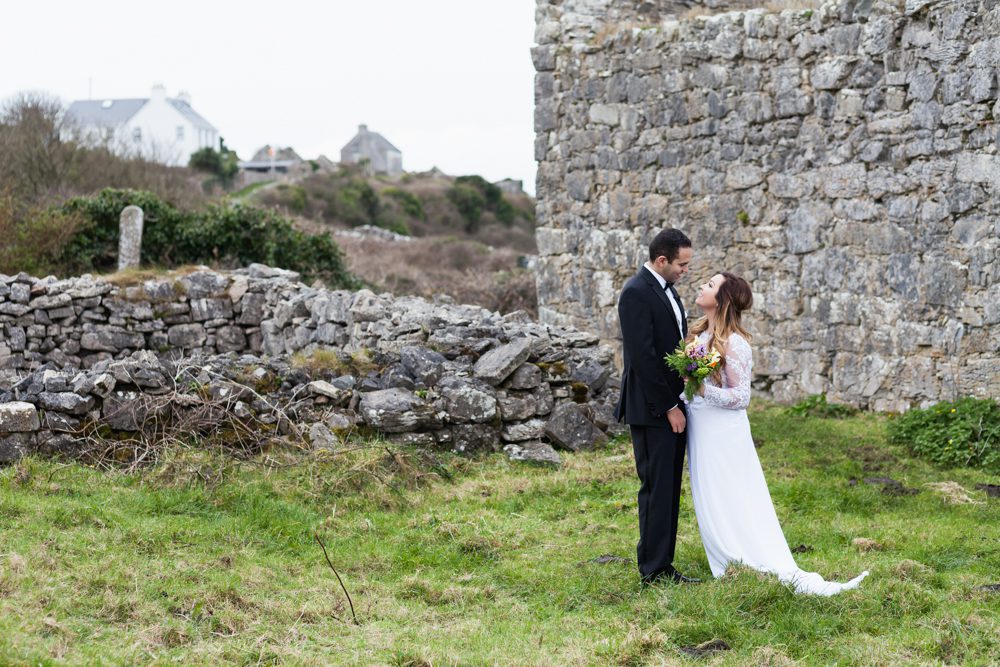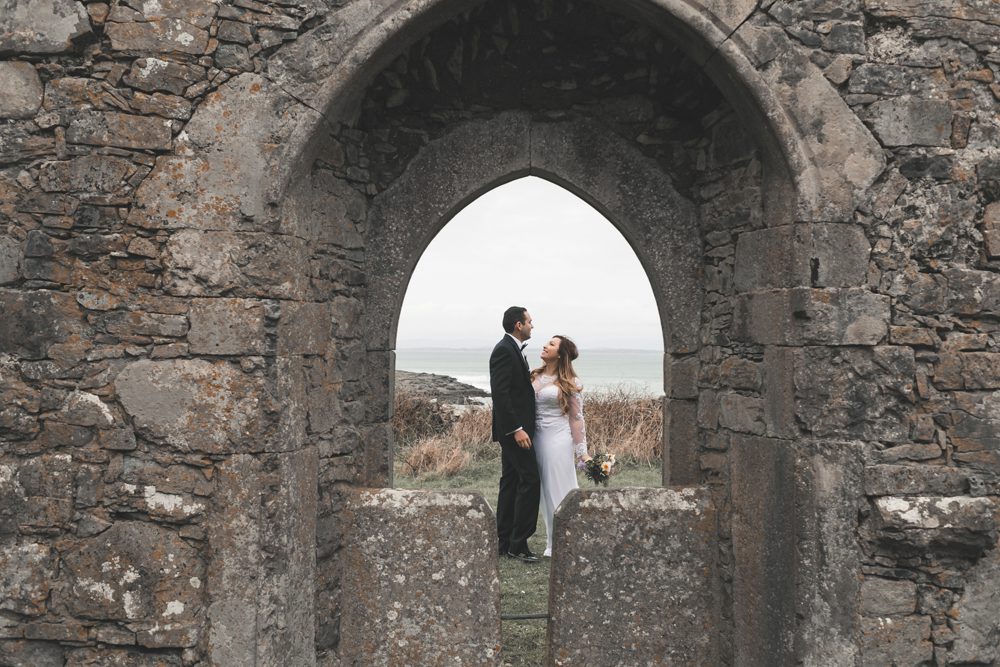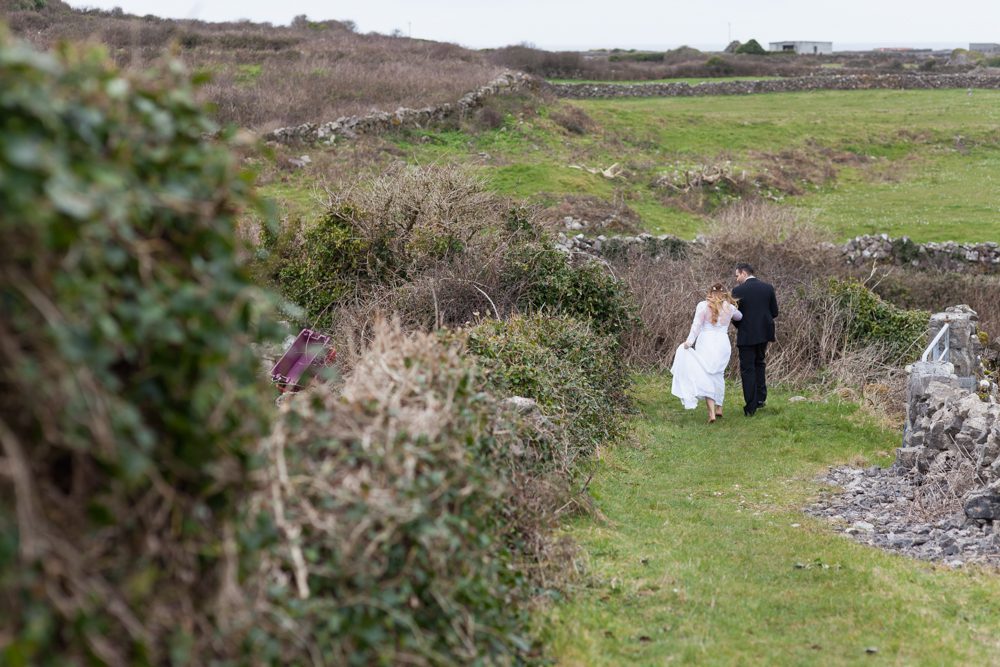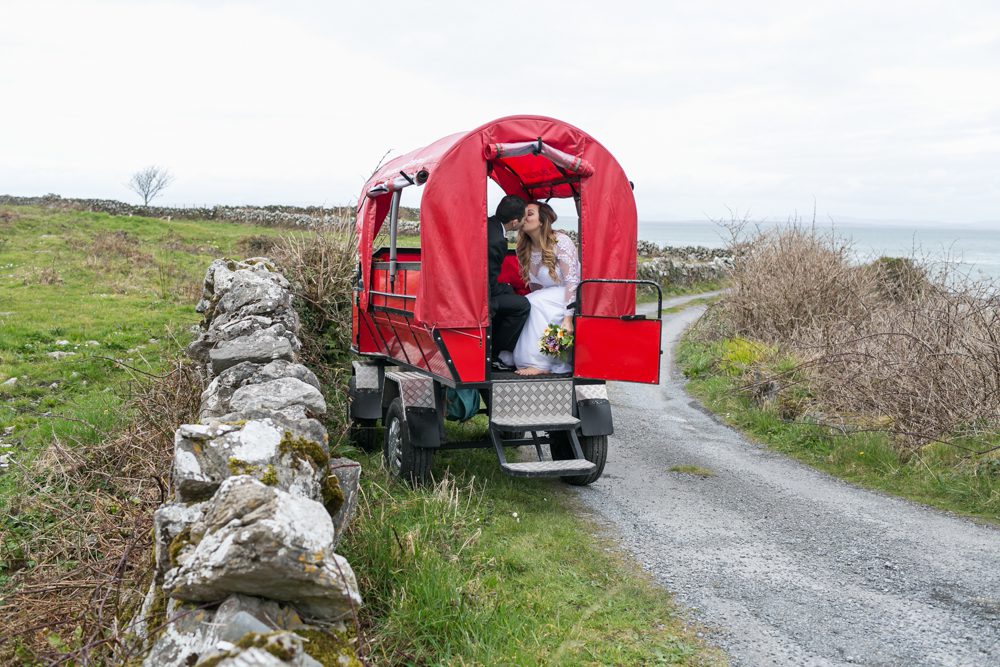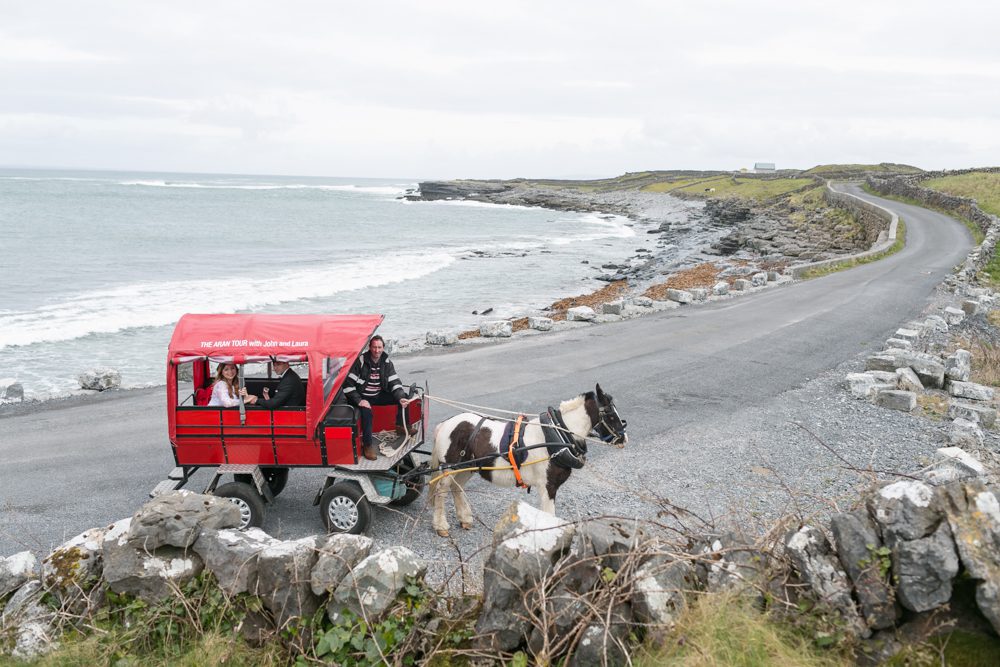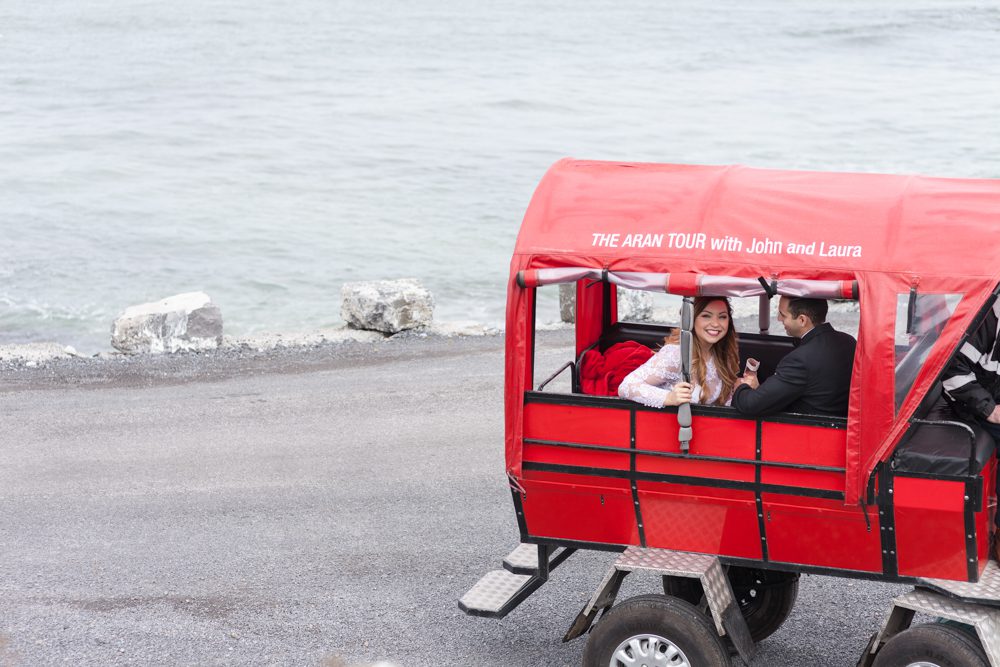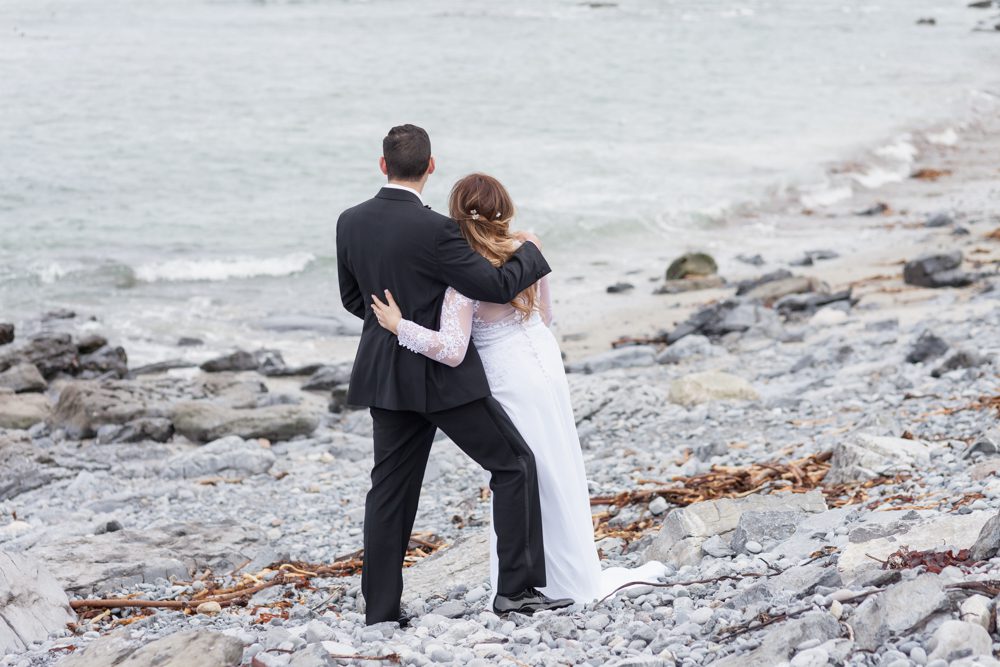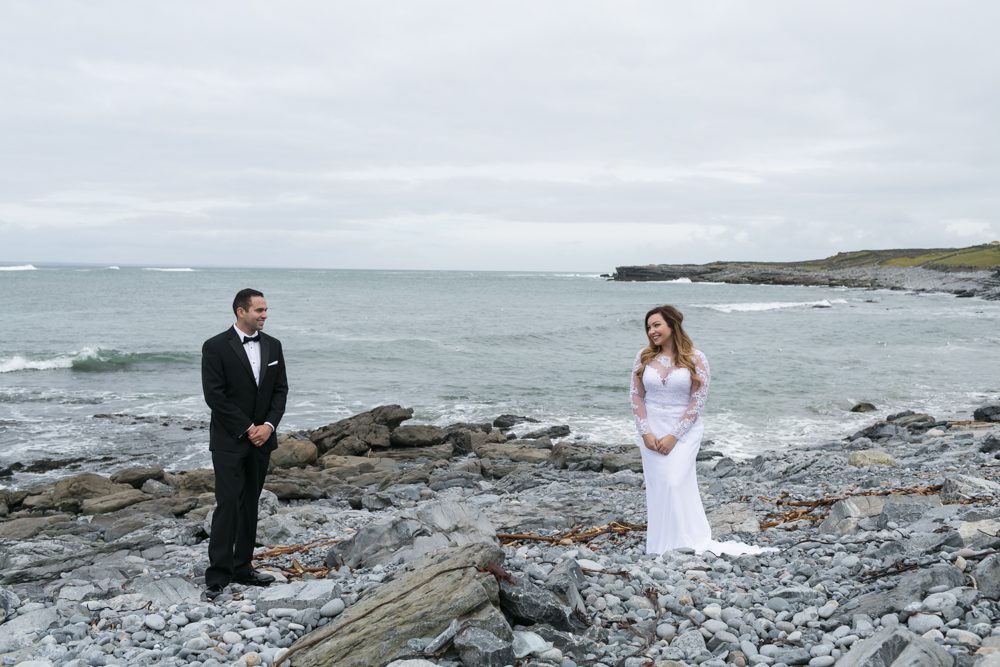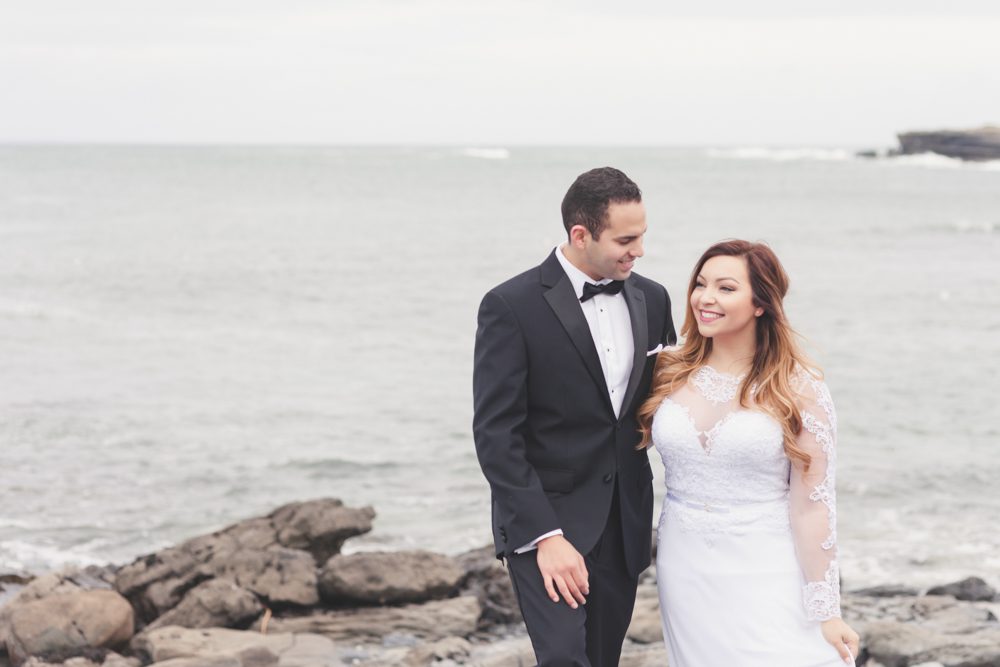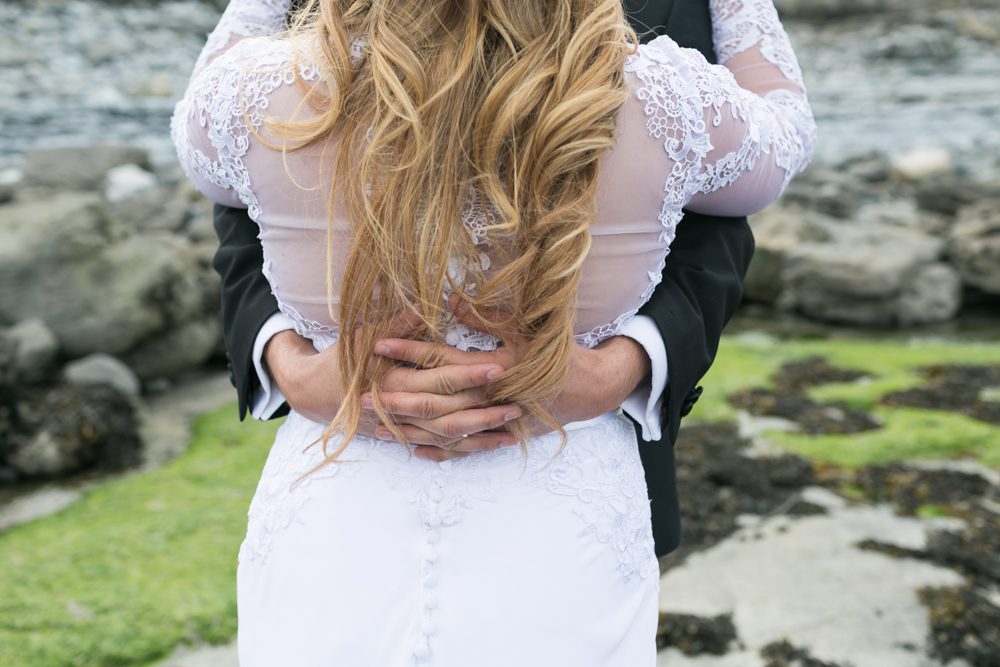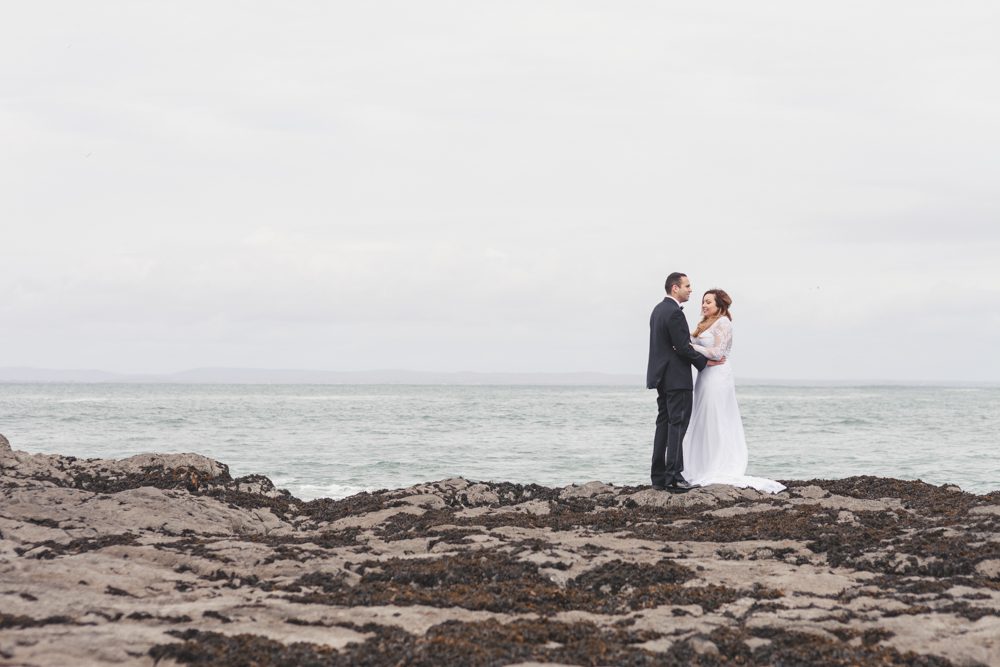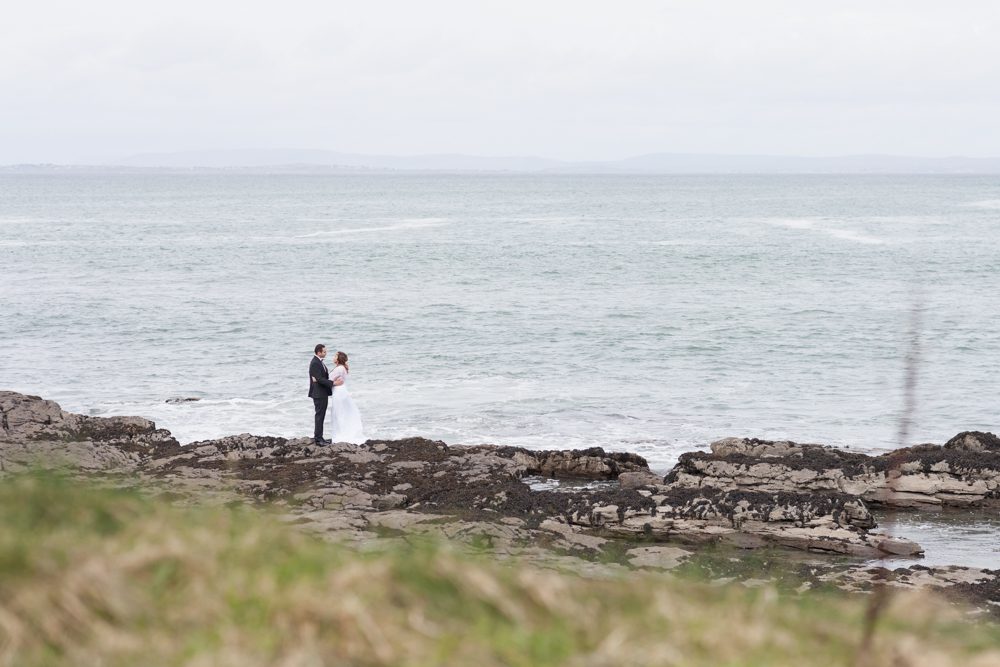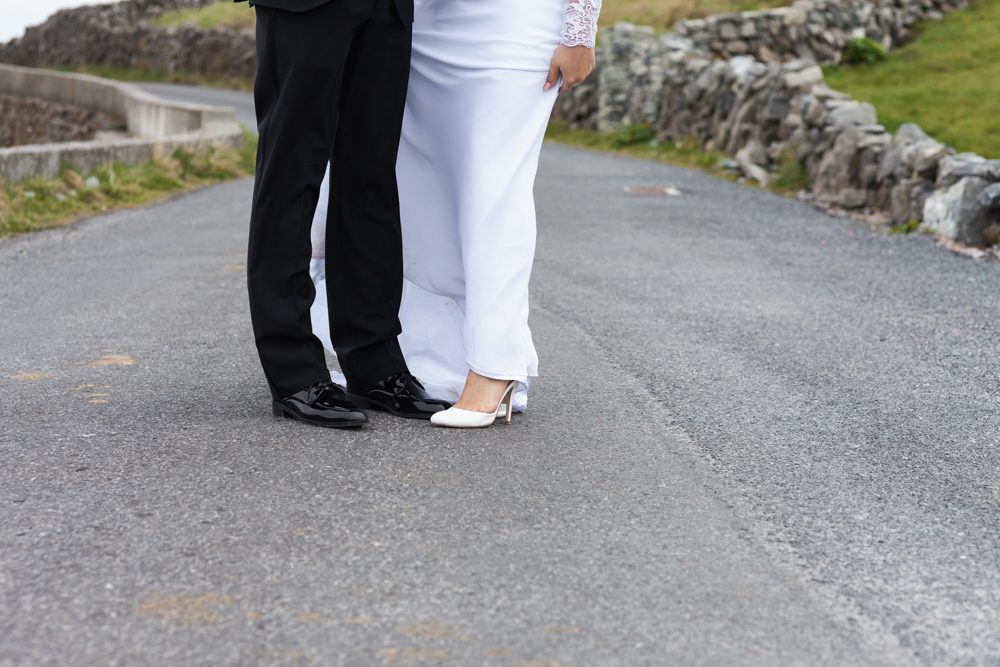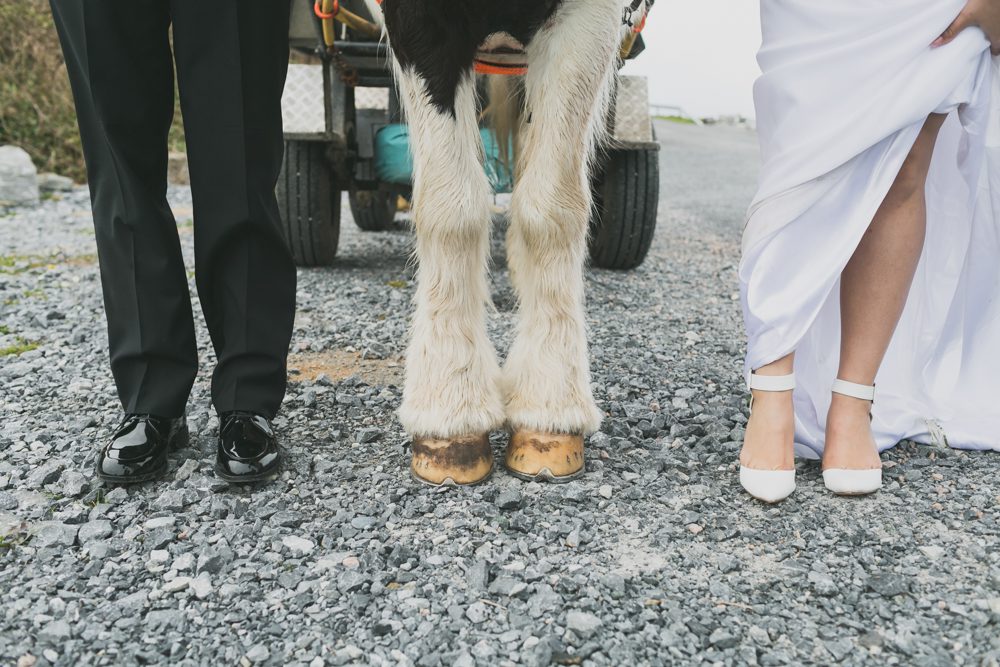Madison and John came all the way from the US to the tiny island of Inishmore off the West Coast Ireland to get married.
It was truly amazing ceremony in a ruin on an Island in the Atlantic ocean overlooking breathtaking scenery and combining a beautiful blend of Irish traditions.
The ceremony location is a dream come true Mainistir Chiaráin – the ancient monastic lands of St Ciarán’s Monastery, Mainistir, Inis Mór. Performed by Dara Molloy, Celtic priest.
A Nature-Based Celtic Wedding has four old celtic, pre-christian stations during the ceremony.
Holy Well, Standing Stone, Altar and Sundial.
“I can’t even begin to describe the feeling John and I have when looking through our pictures. Olga ( MrsRedhead ) seemed to capture every magical moment and all of the joy we felt on our wedding day. When we look at the images, it pulls us back to that special day when all that mattered was one another. Since it was just the two of us, Olga and her team quickly became our wedding party and helped us with anything and everything we needed to make our wedding day a success. If we ever have another event in Europe, Olga will be my first call”.
M&J
- MrsRedhead Wedding Photography Ireland
- First look 🙂
- The Well is a Celtic symbol of the feminine. In ancient Ireland, it was an entrance to the womb of the goddess. The goddess was the land of Ireland, Eriú. At this well we celebrate the woman to be married. The groom circles her, doing a round of the well just as the sun circles the earth every day.
- The Standing Stone is a Celtic symbol of male fertility and power. In ancient Ireland it was used as a phallic symbol, marking a centre of creative energy. The monks carved Christian images on it and used it to mark the boundaries of their monastery. At the standing stone we celebrate the man to be married. The groom places his hands on the stone. We pray for virility, manhood, and for the groom as husband and father.
- The Altar represents God or the Divine. This altar was used by the monks for 1100 years, from the 5th to the 16th century, as the focus for their worship. It is likely that they built the altar above an earlier Druidic energy point. Before the altar, the two to be married stand facing each other and make their vows. They exchange rings, have their hands tied in a Celtic handfasting, and receive a blessing of the four elements from the priest.
- The Sundial is a carved stone with a hole in it. It has a circular dial and a Celtic cross carved on it. It was a primitive clock, using a stick in the hole to cast a shadow from the sun across the dial. The monks needed it to divide their day into periods of prayer.
Wedding Photography by Olga – MrsRedhead Photography
Videographer – Dreamcatcher Production
